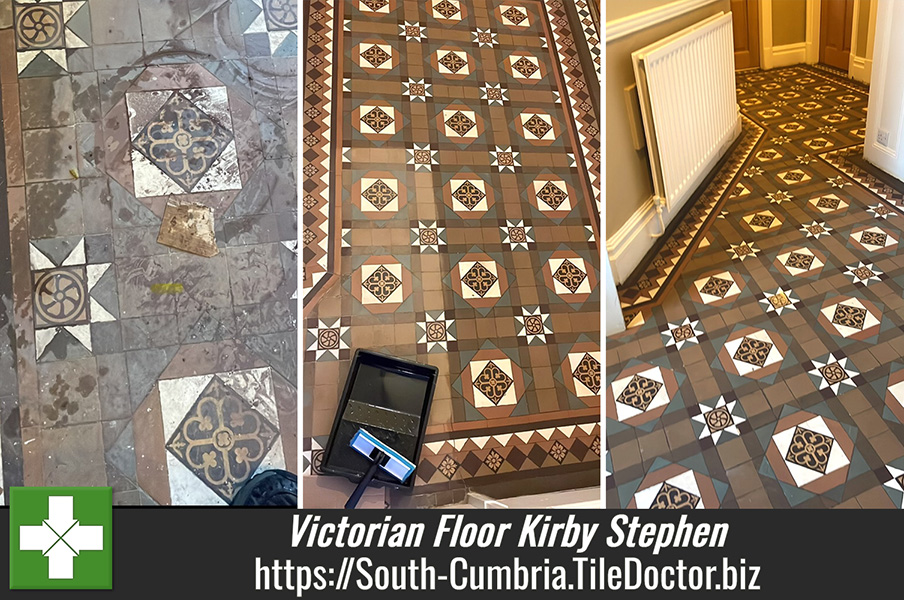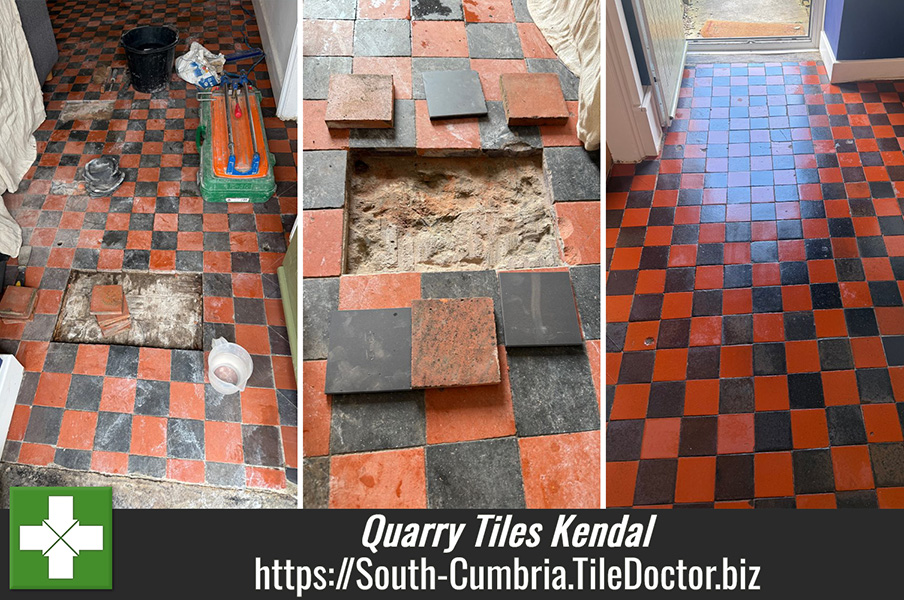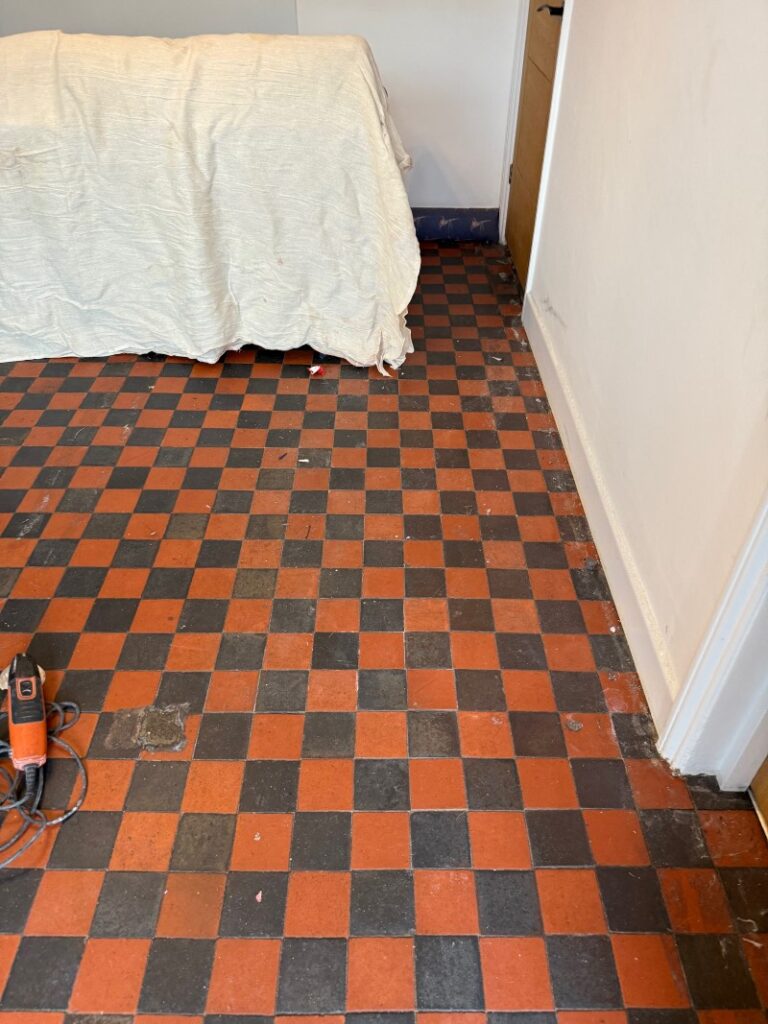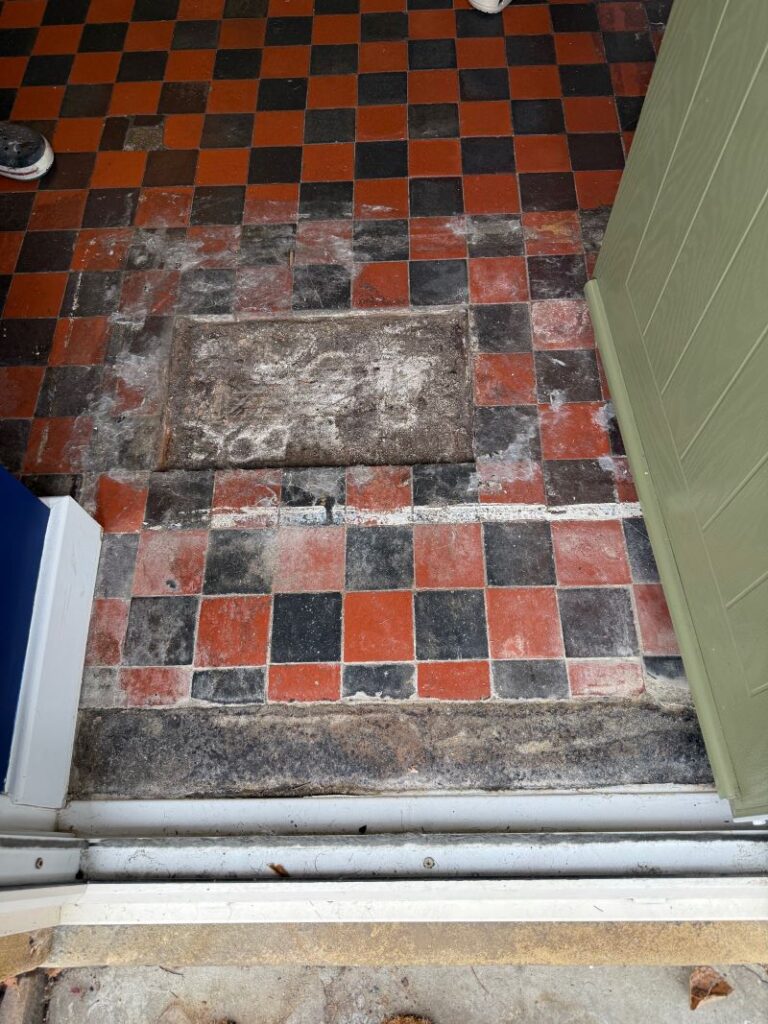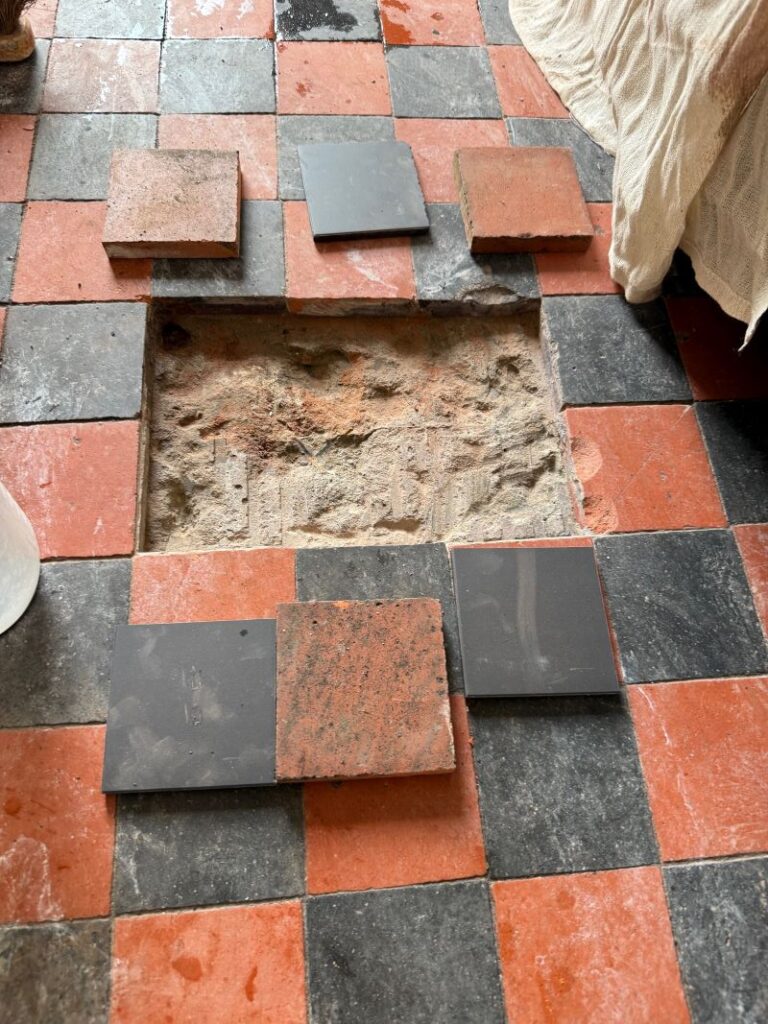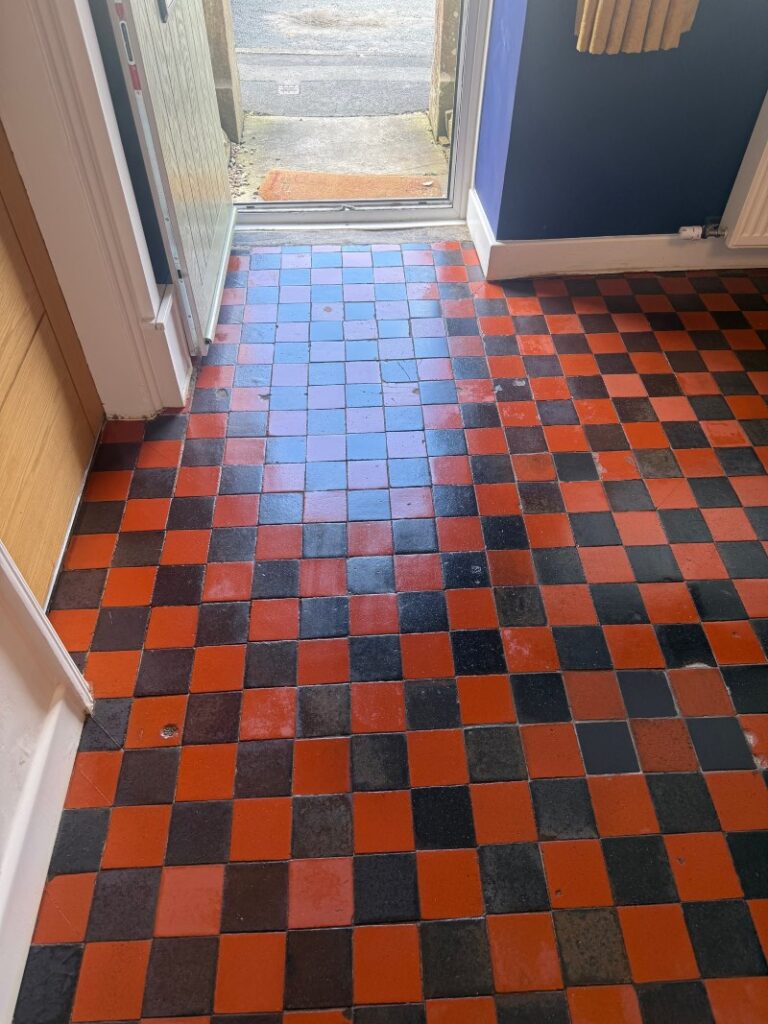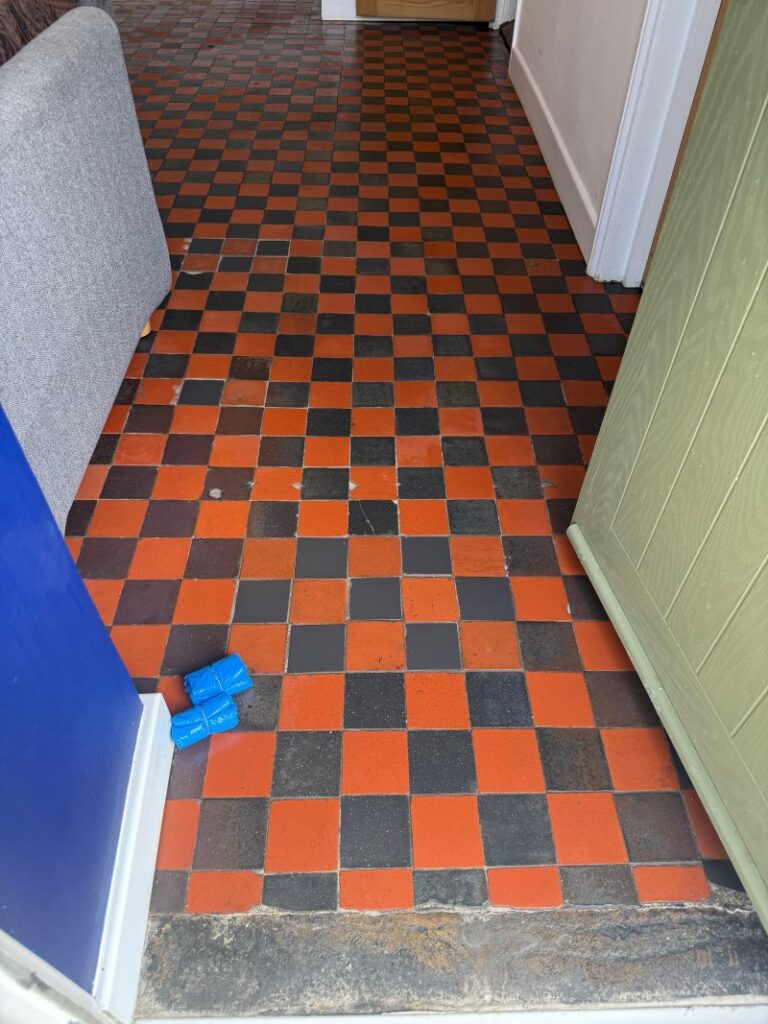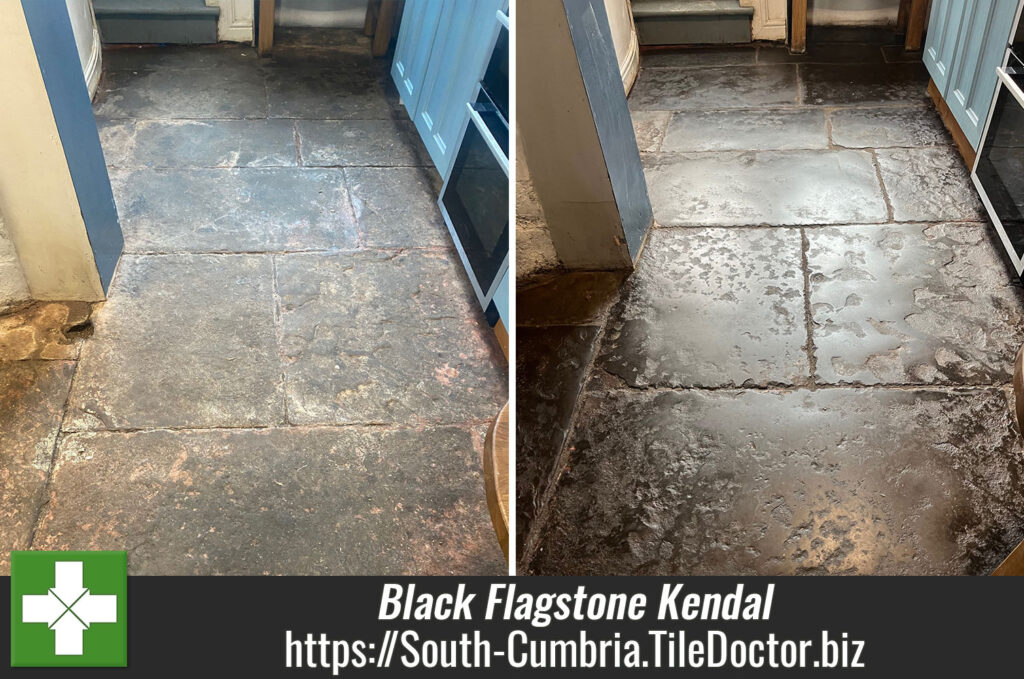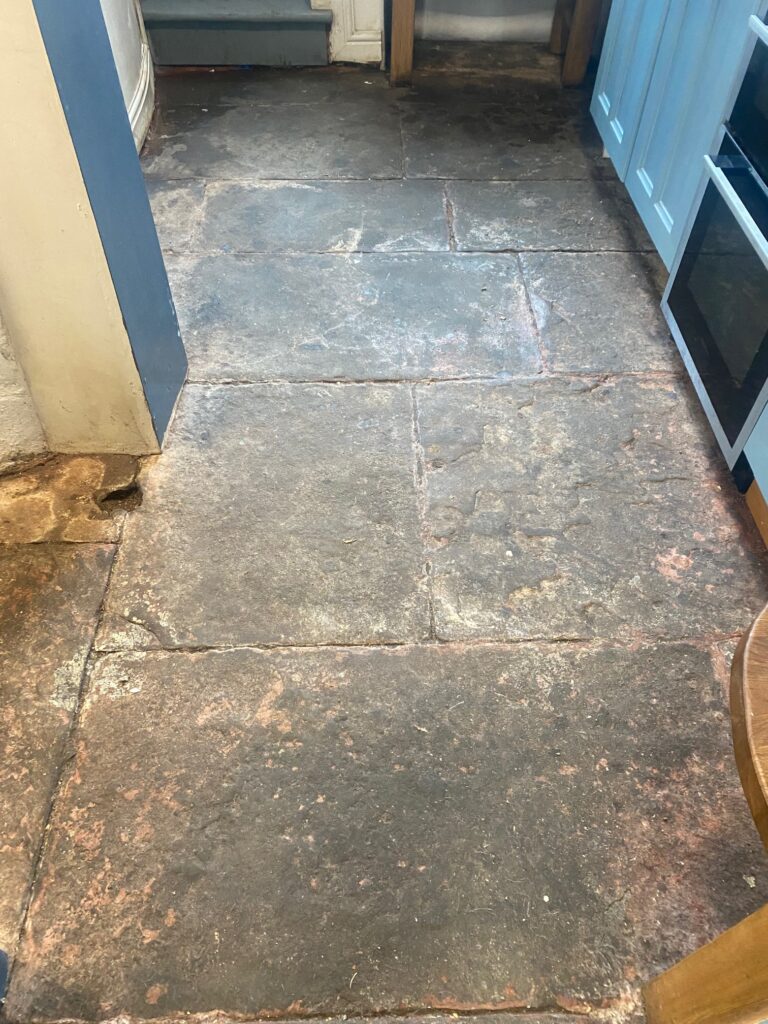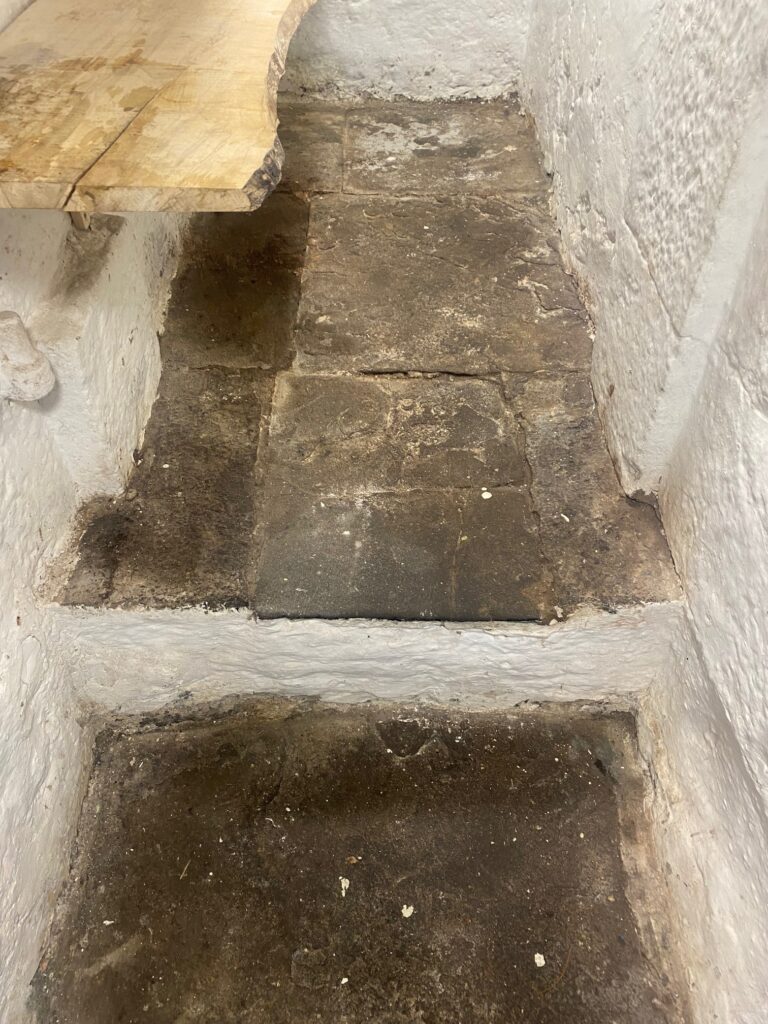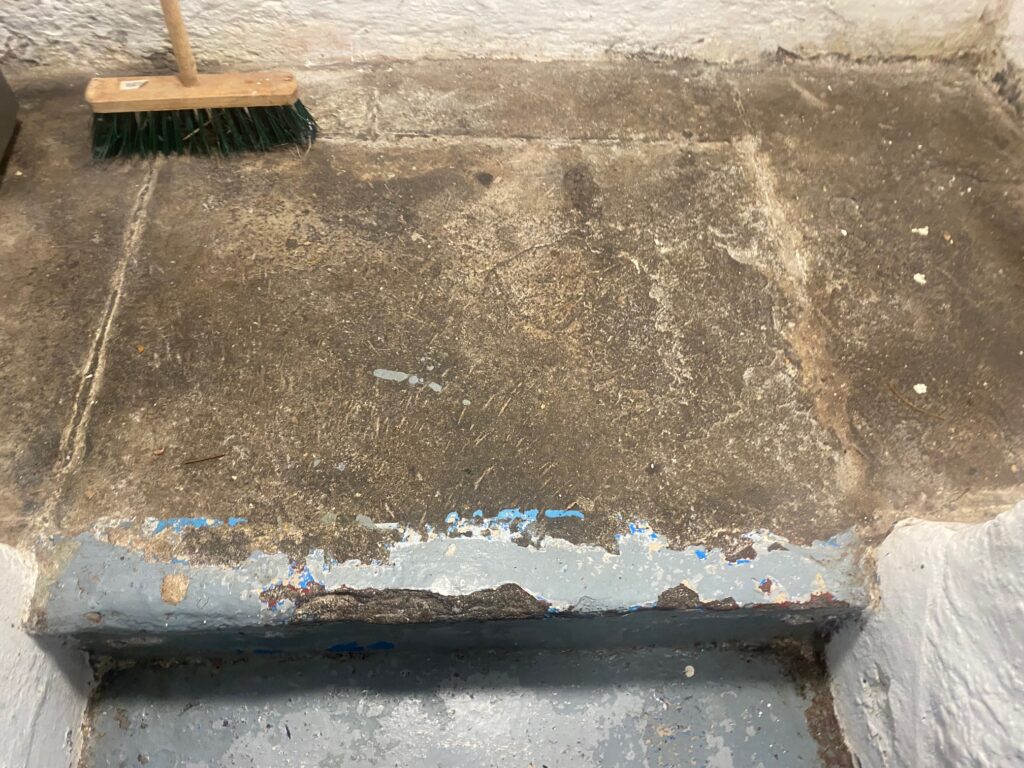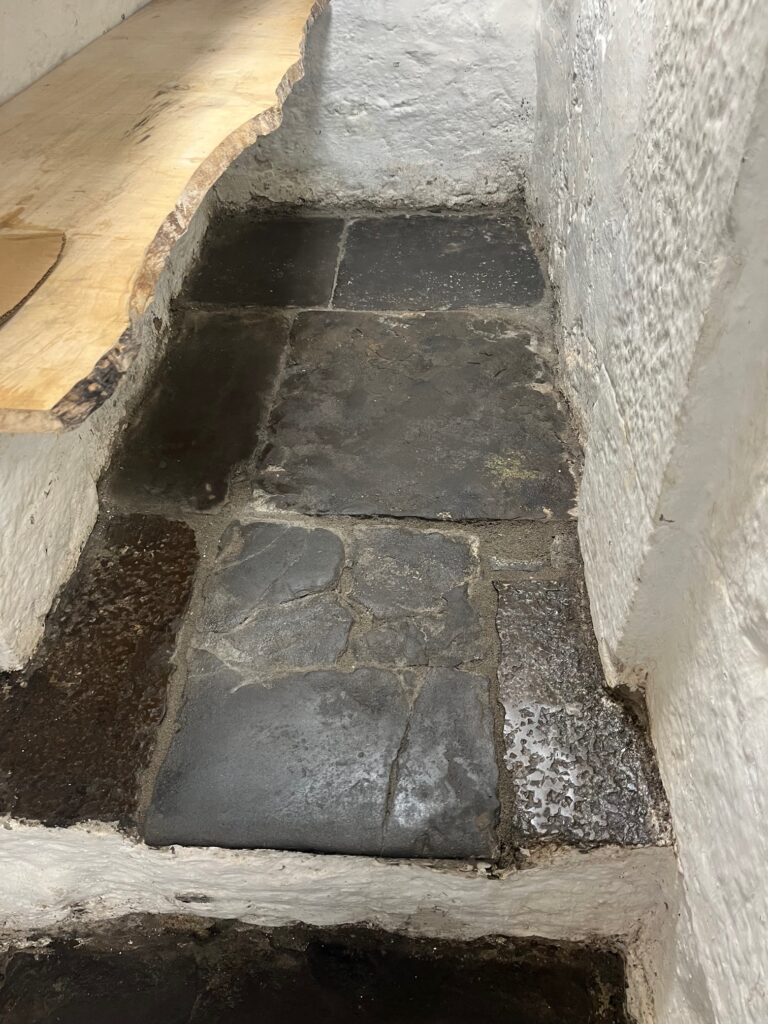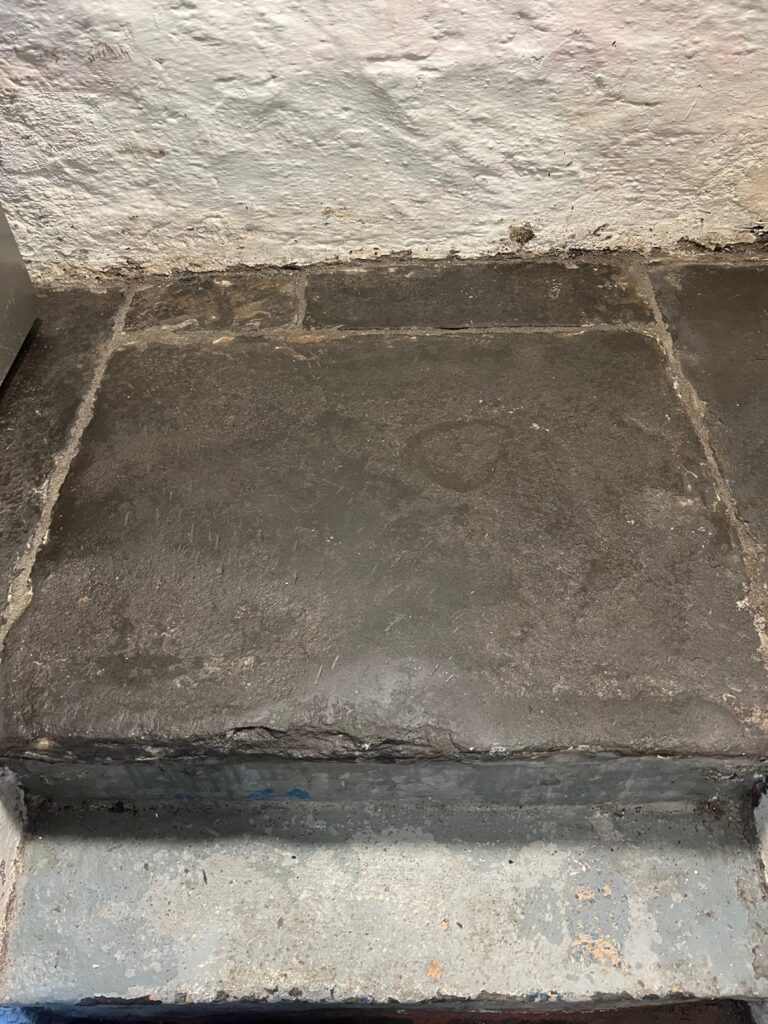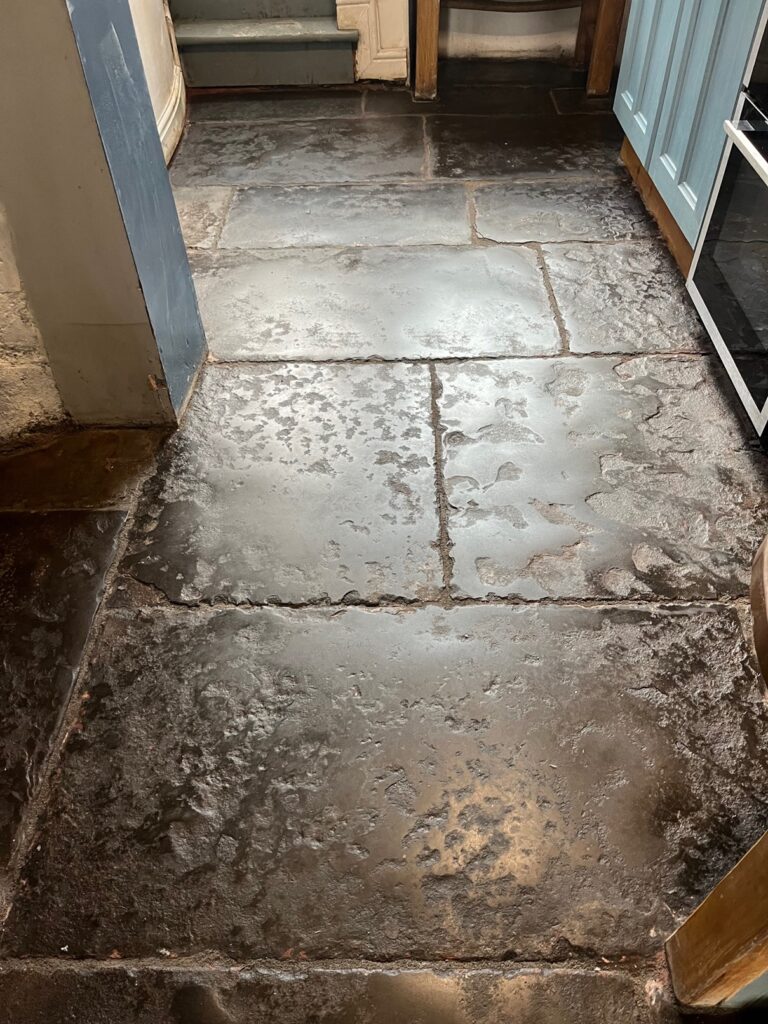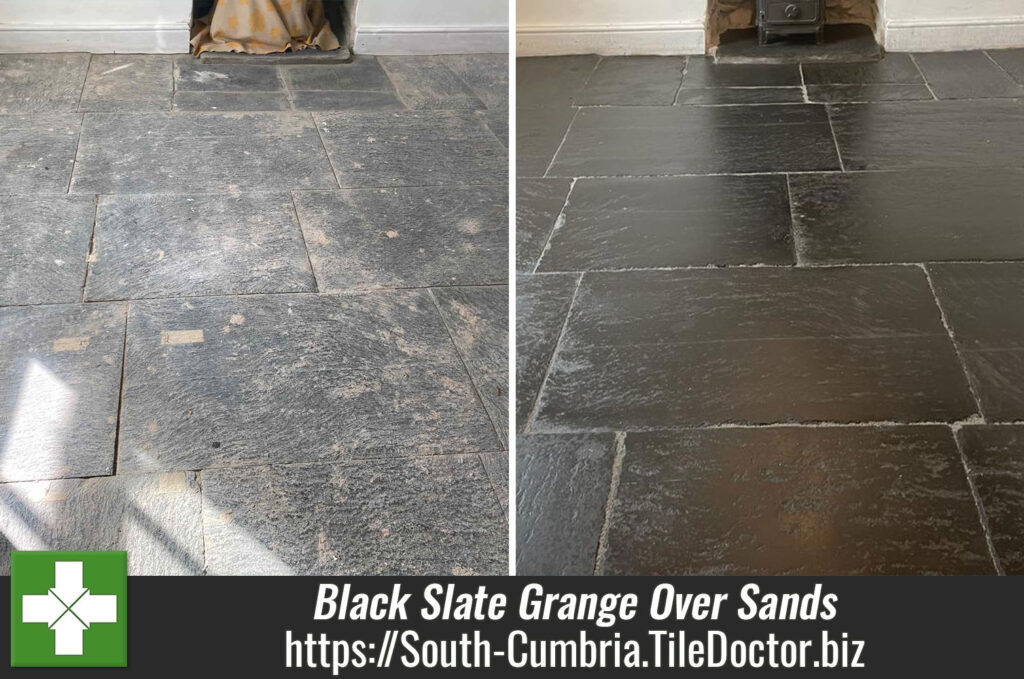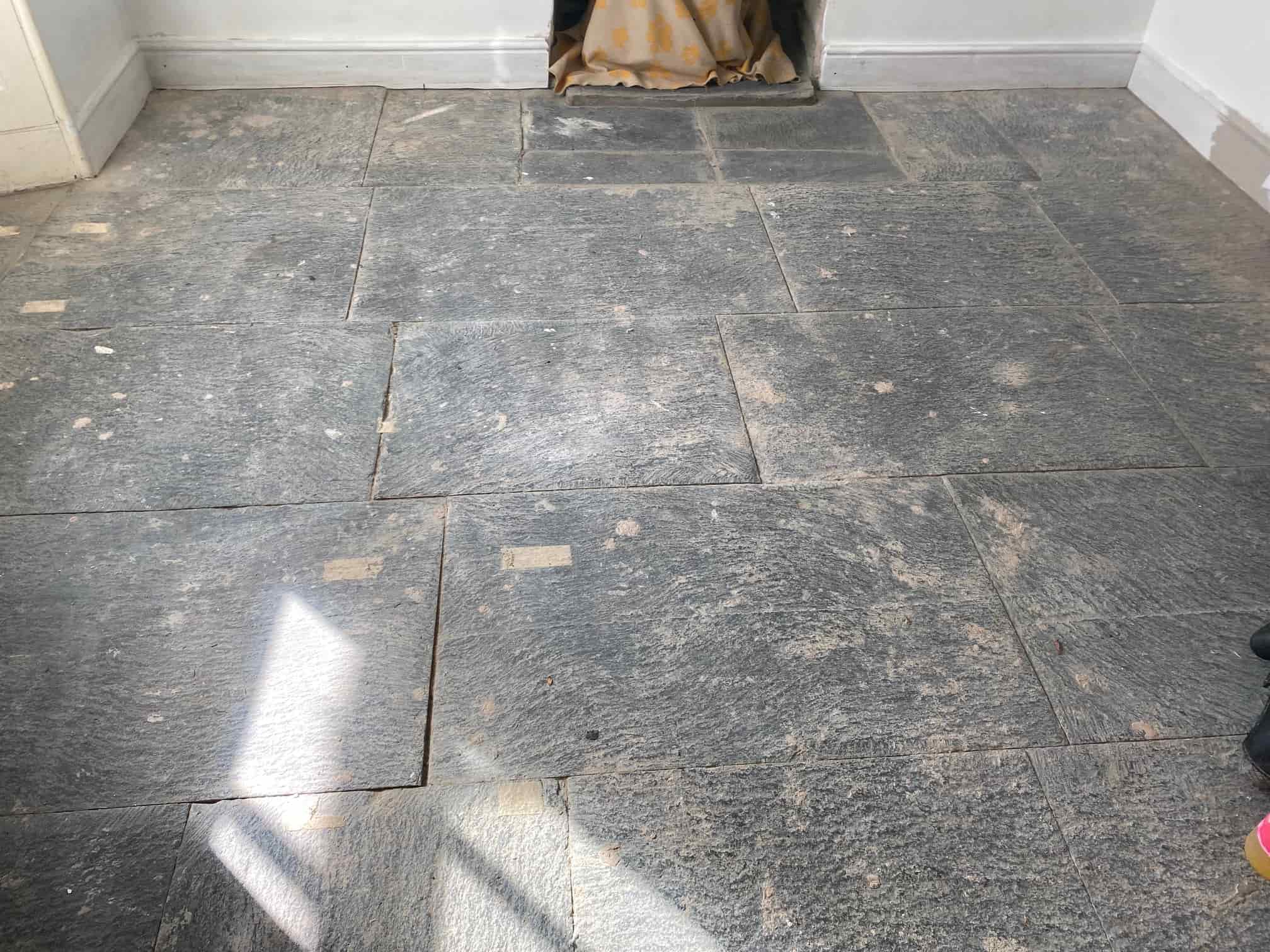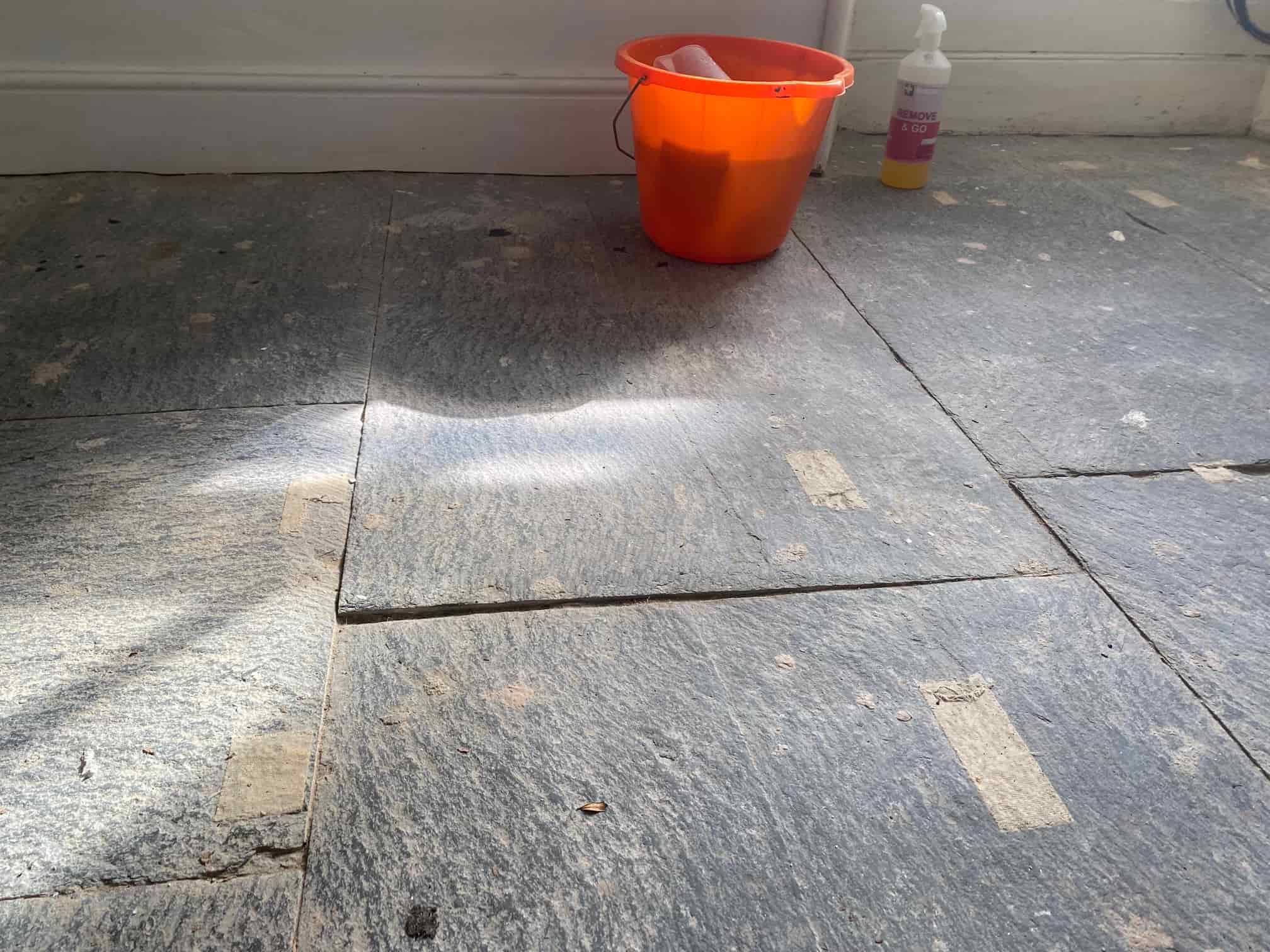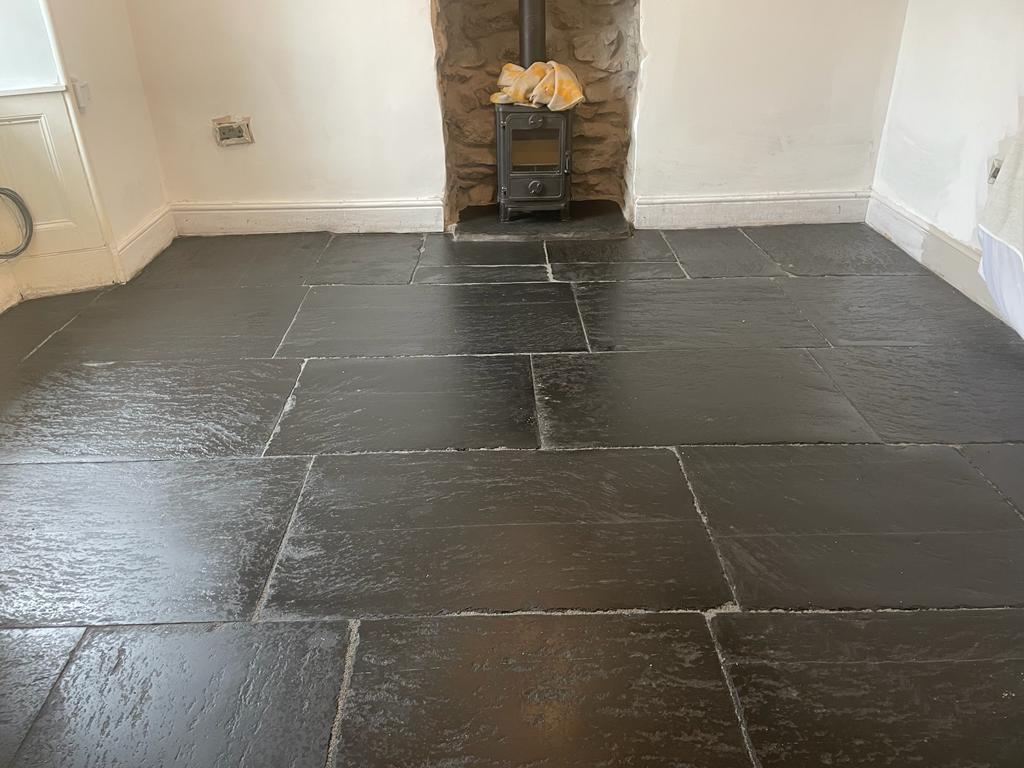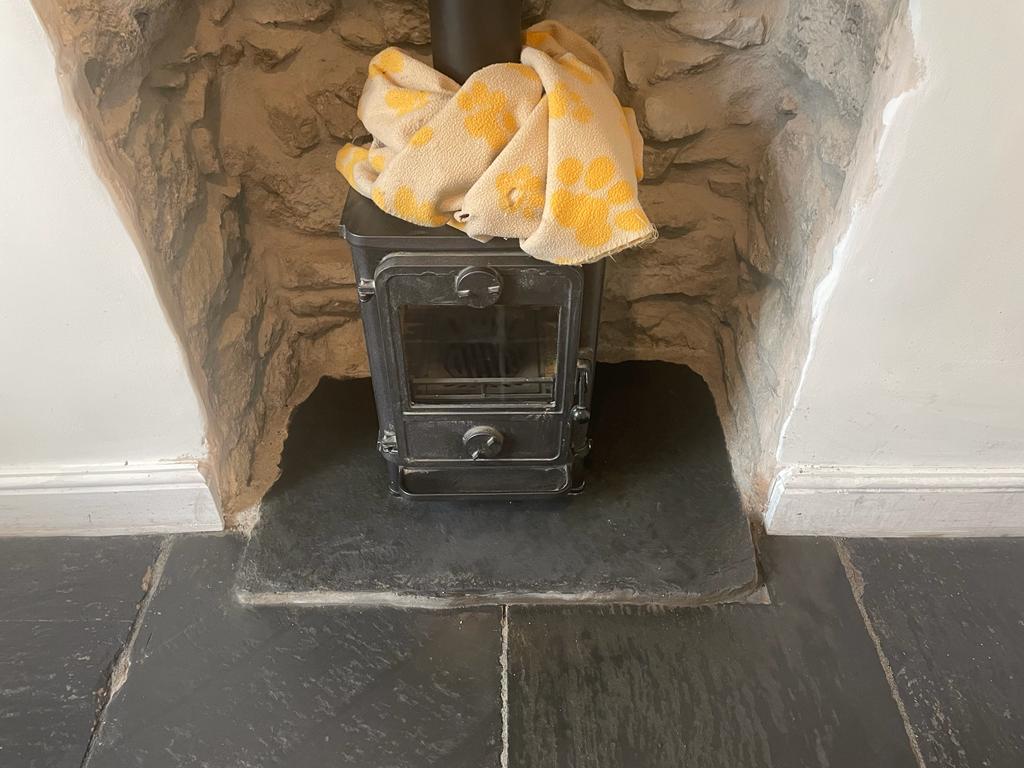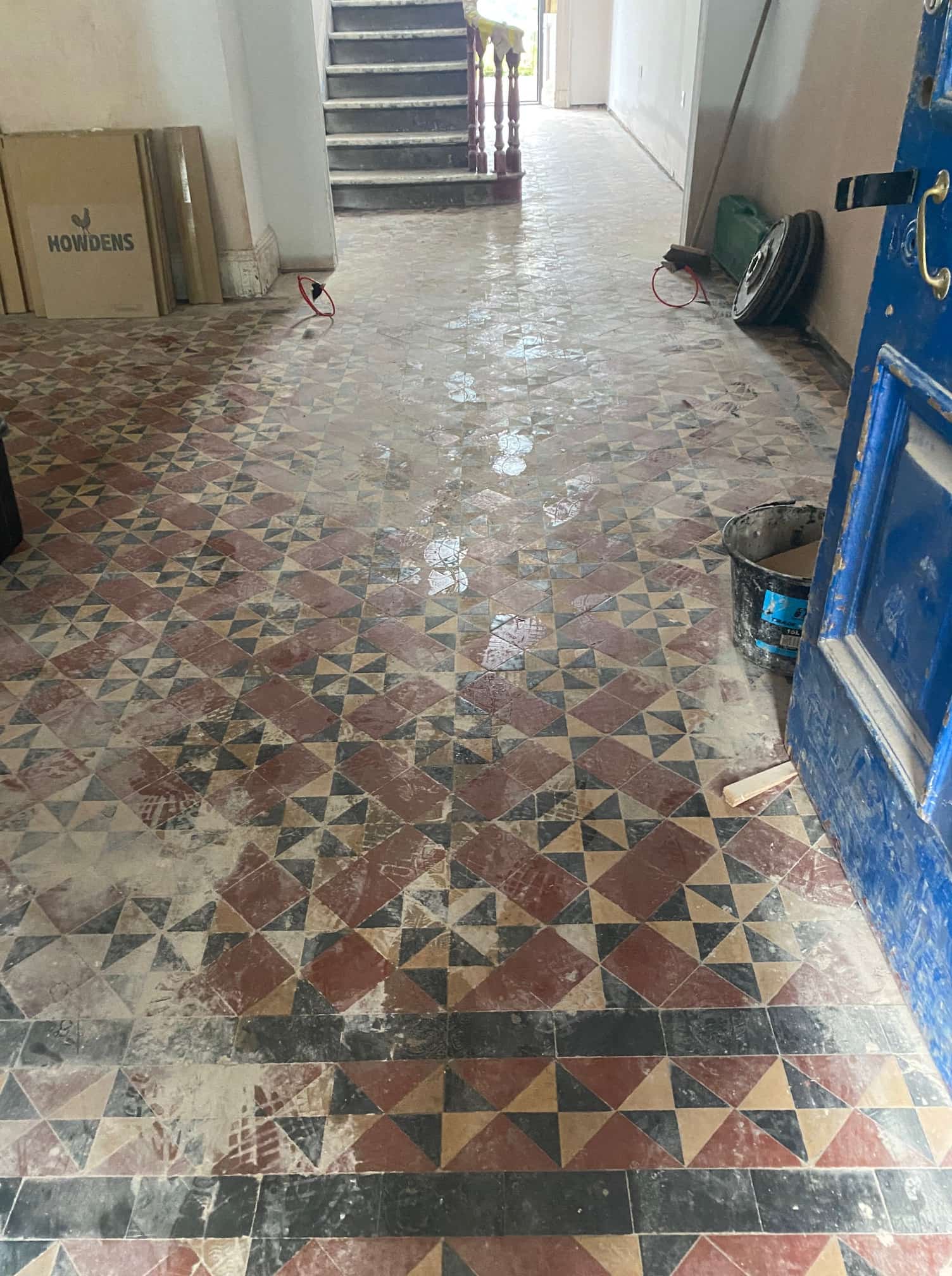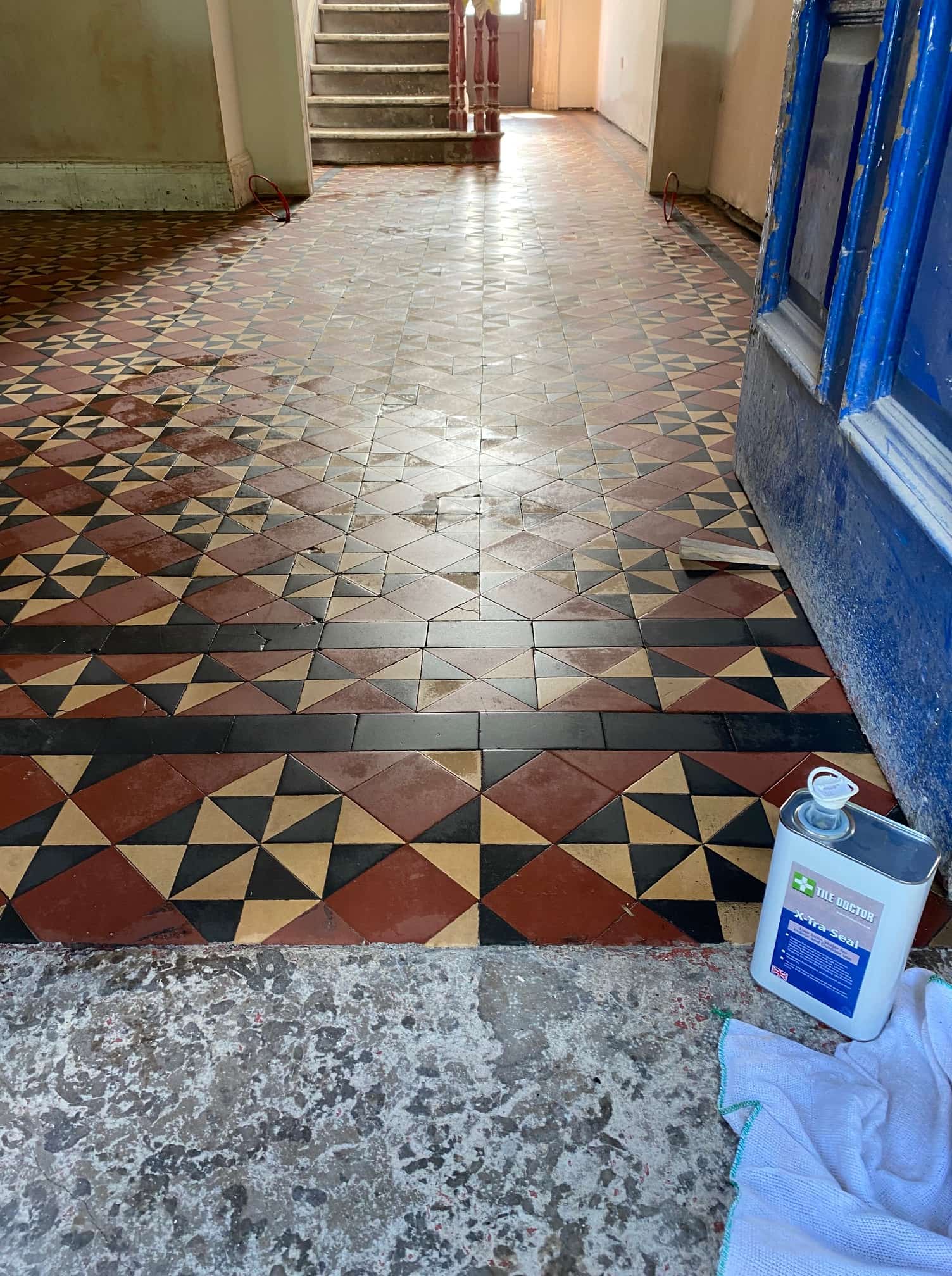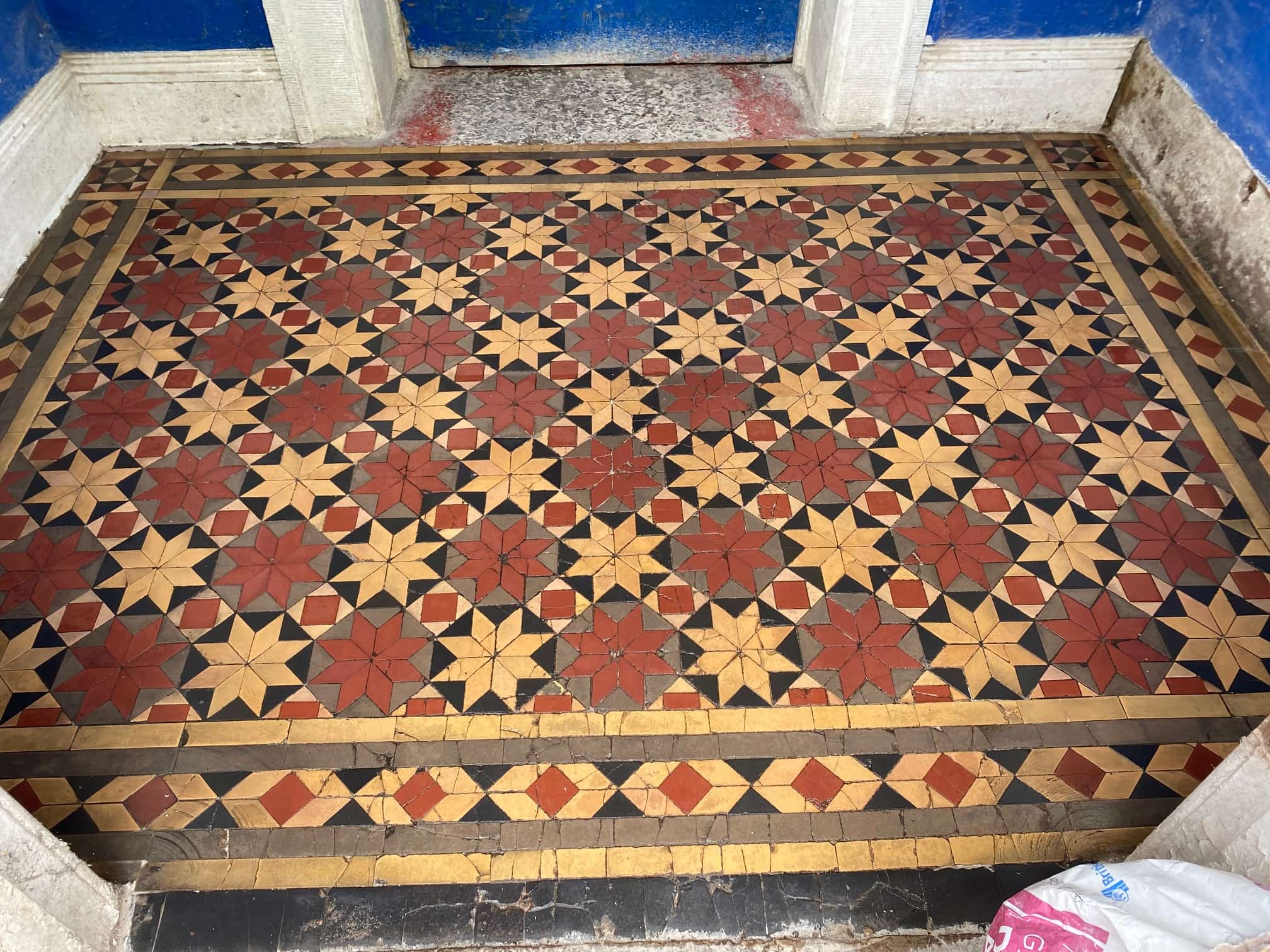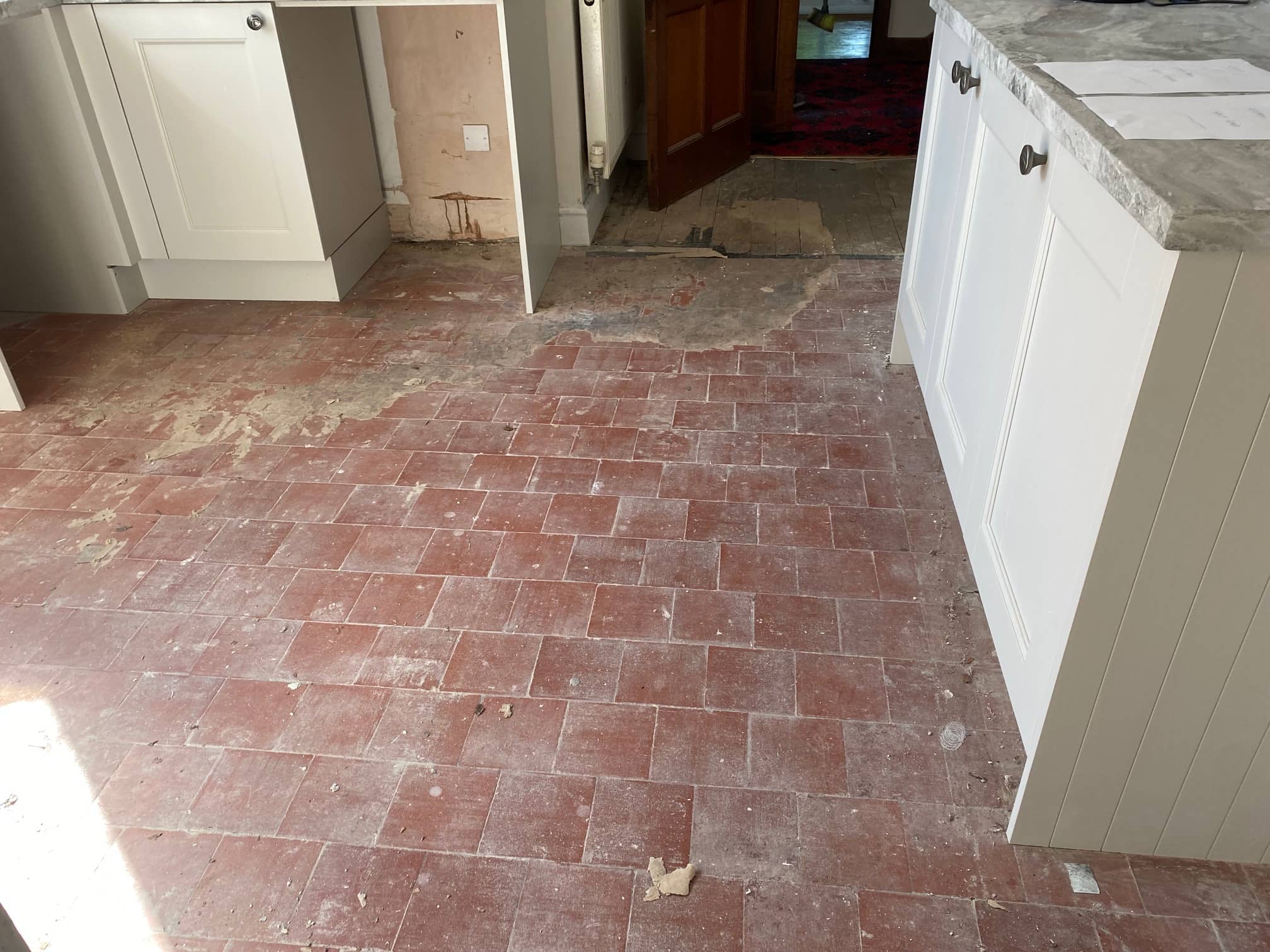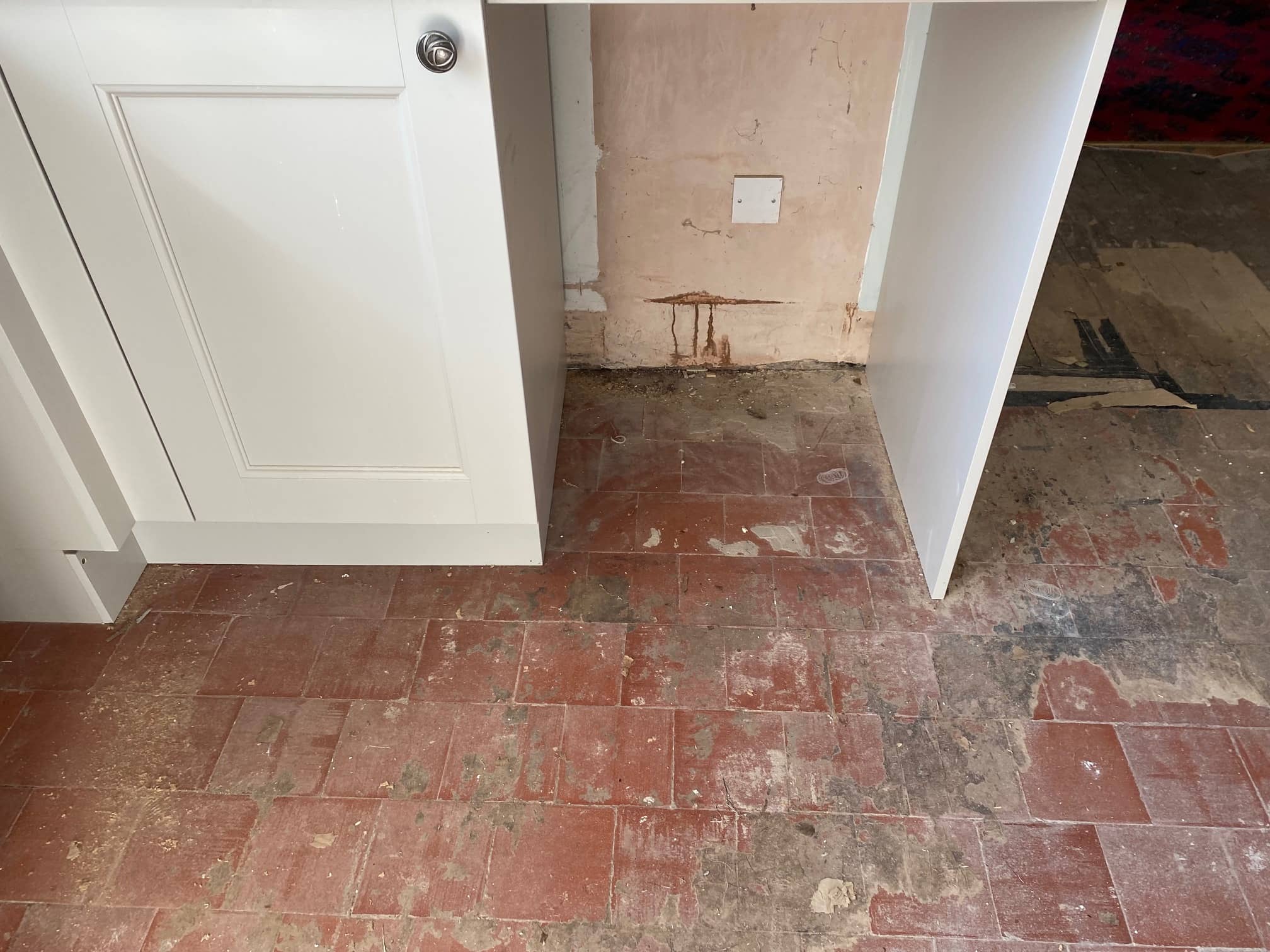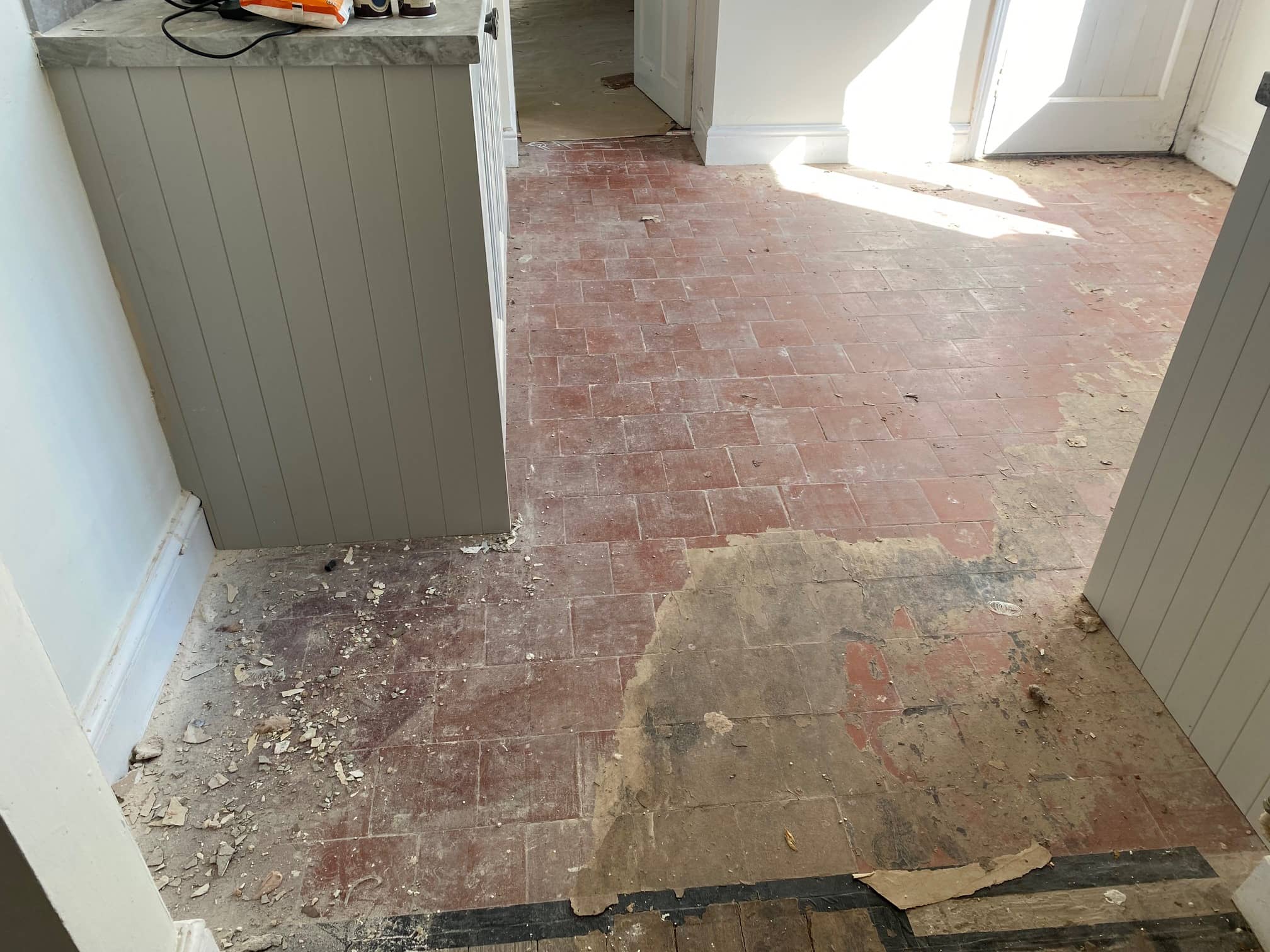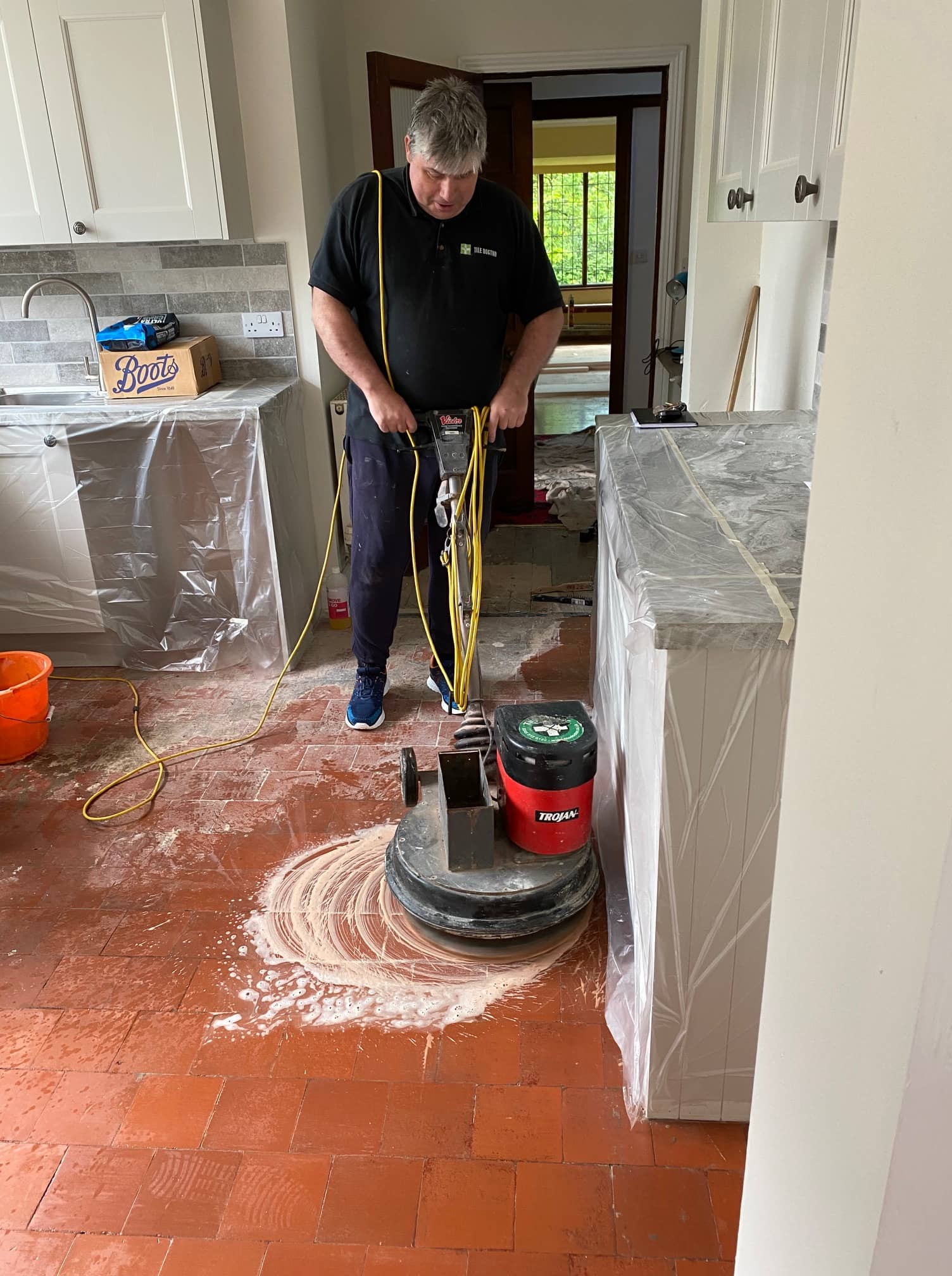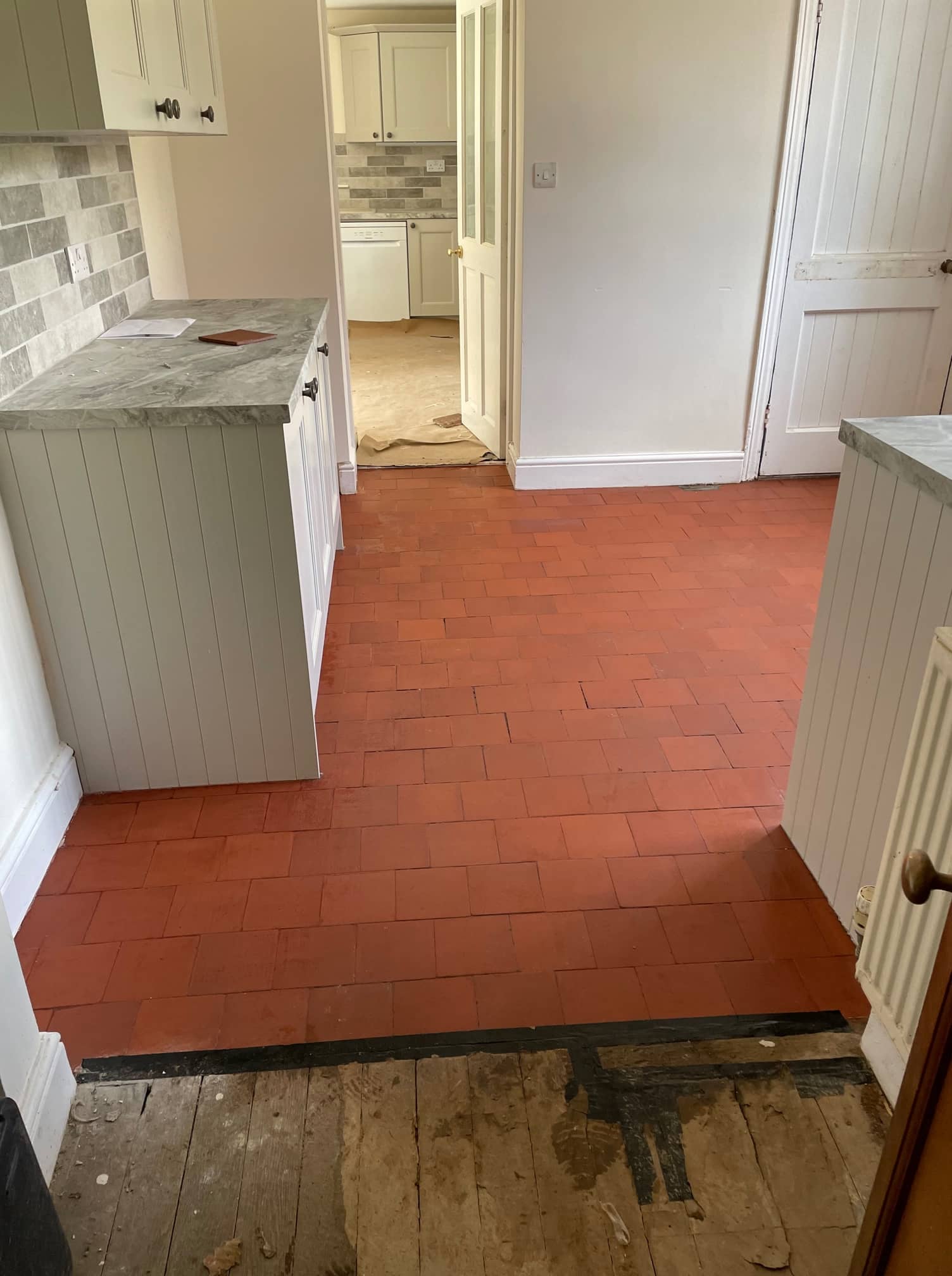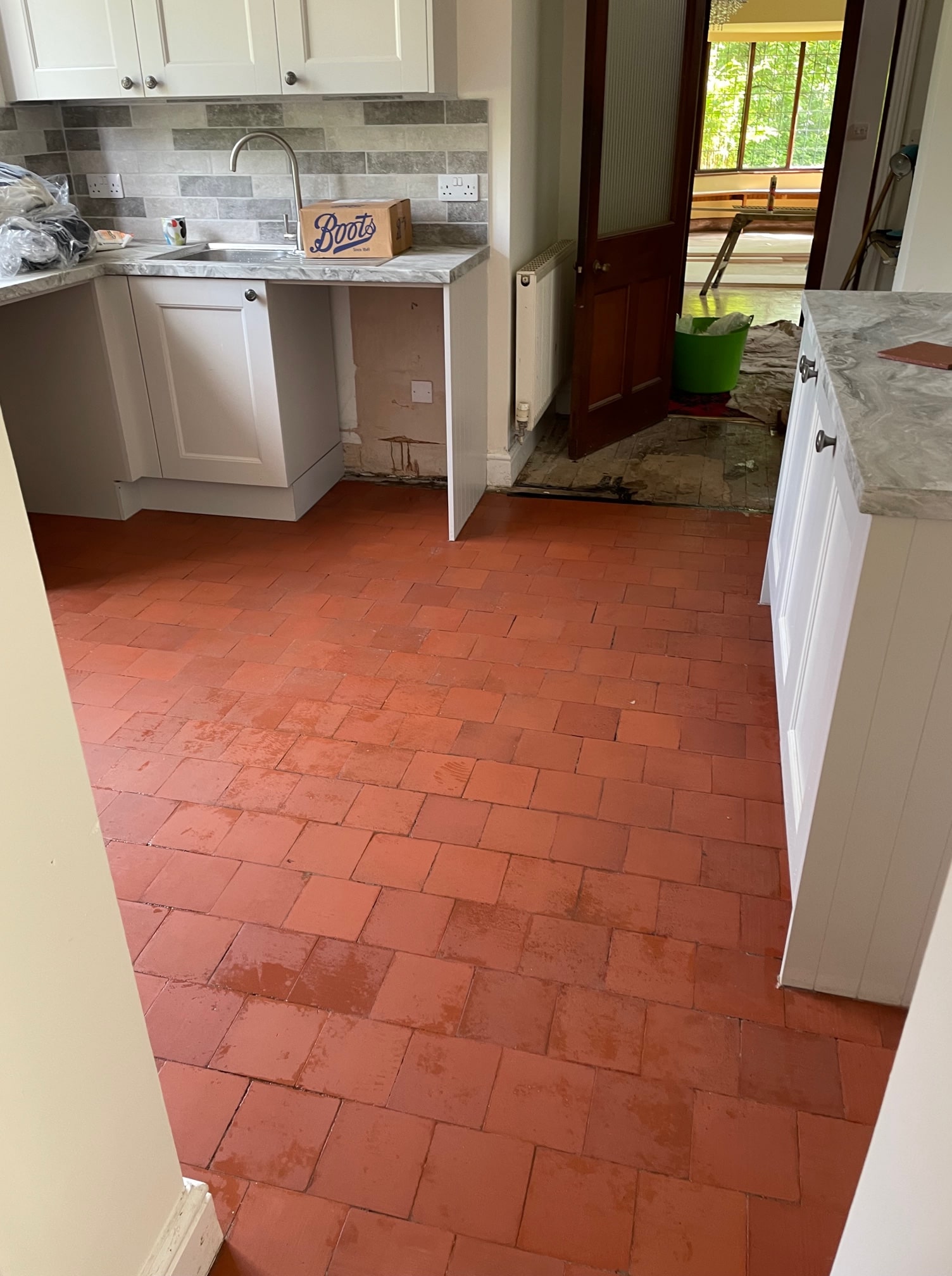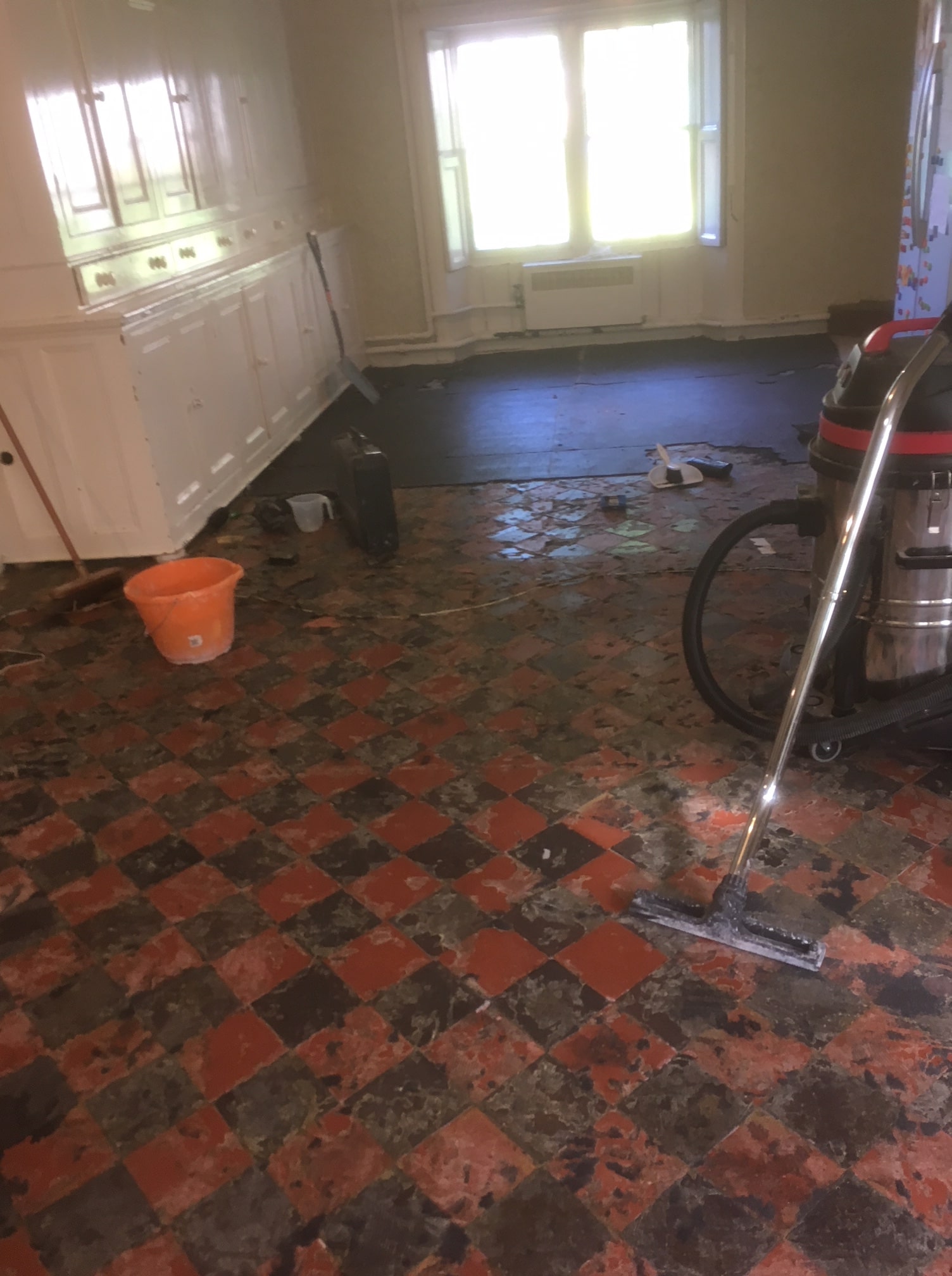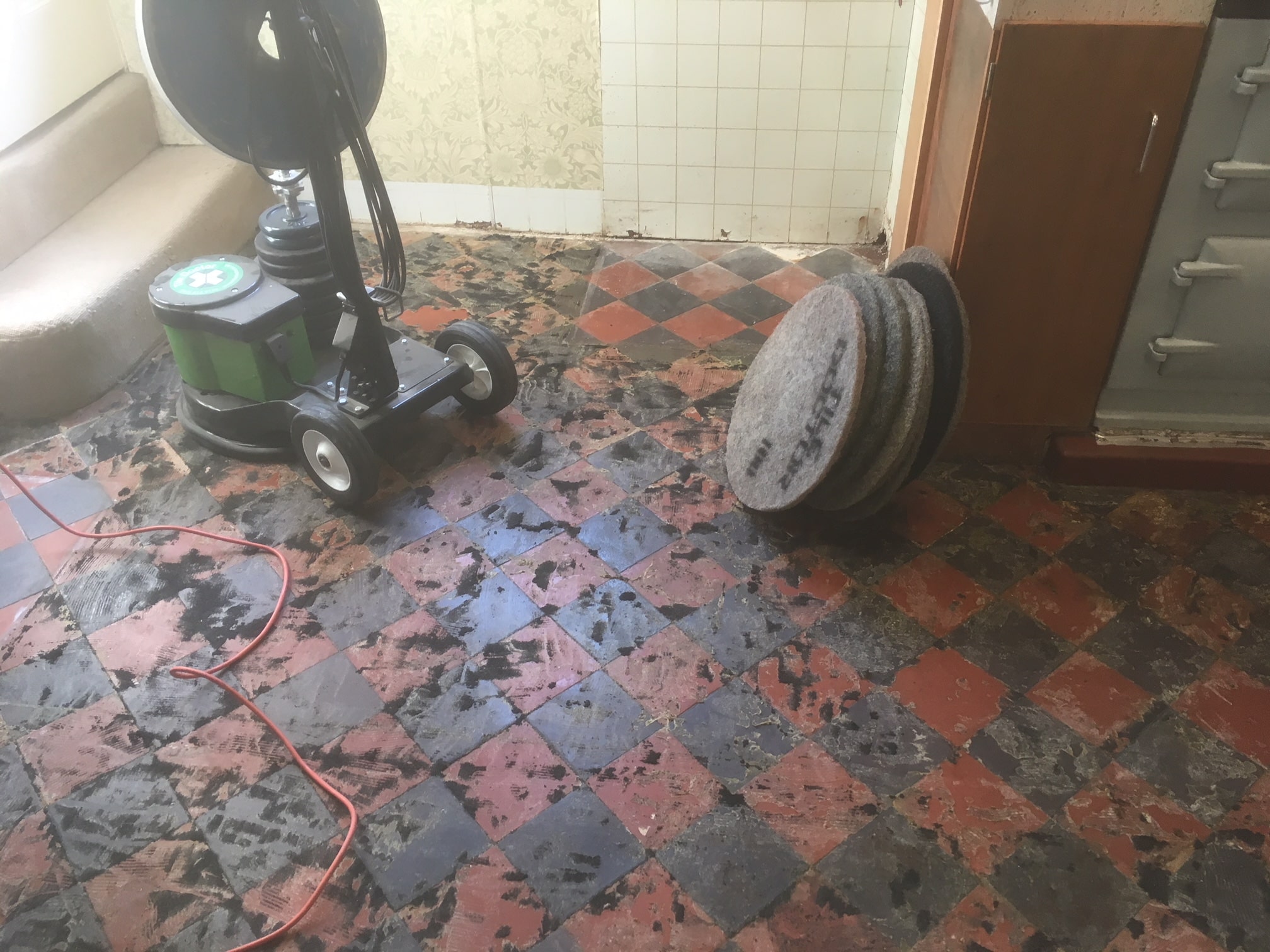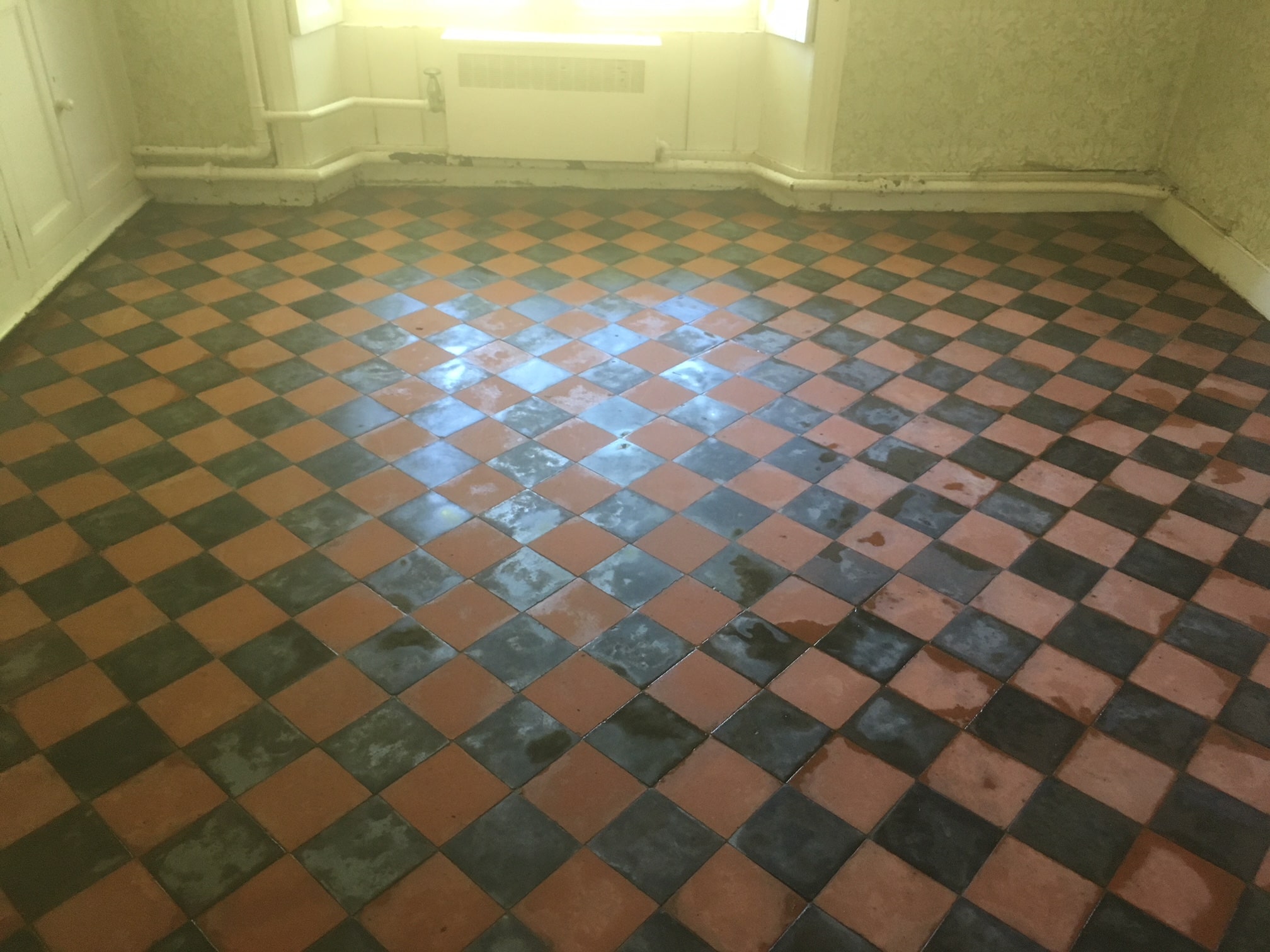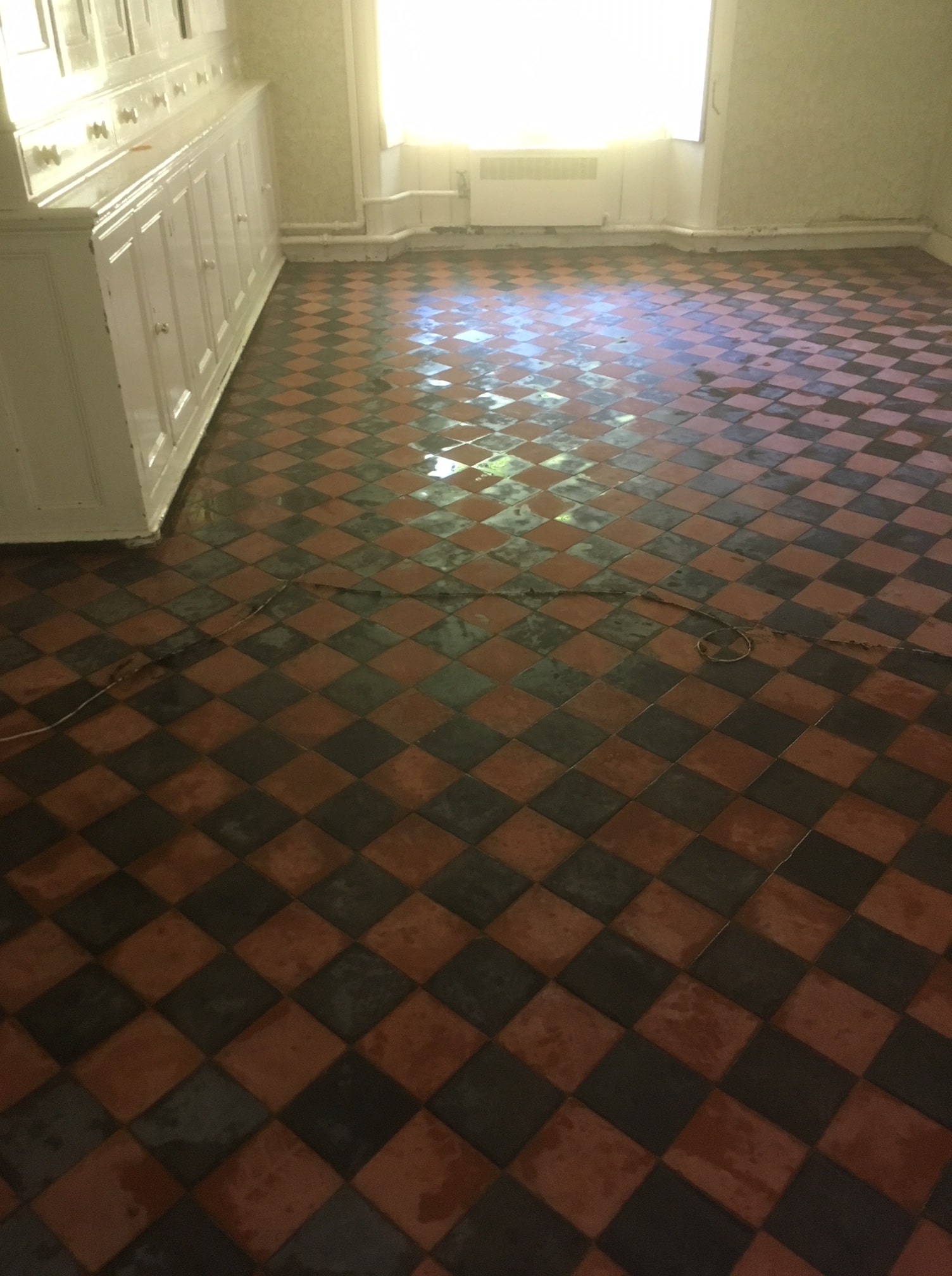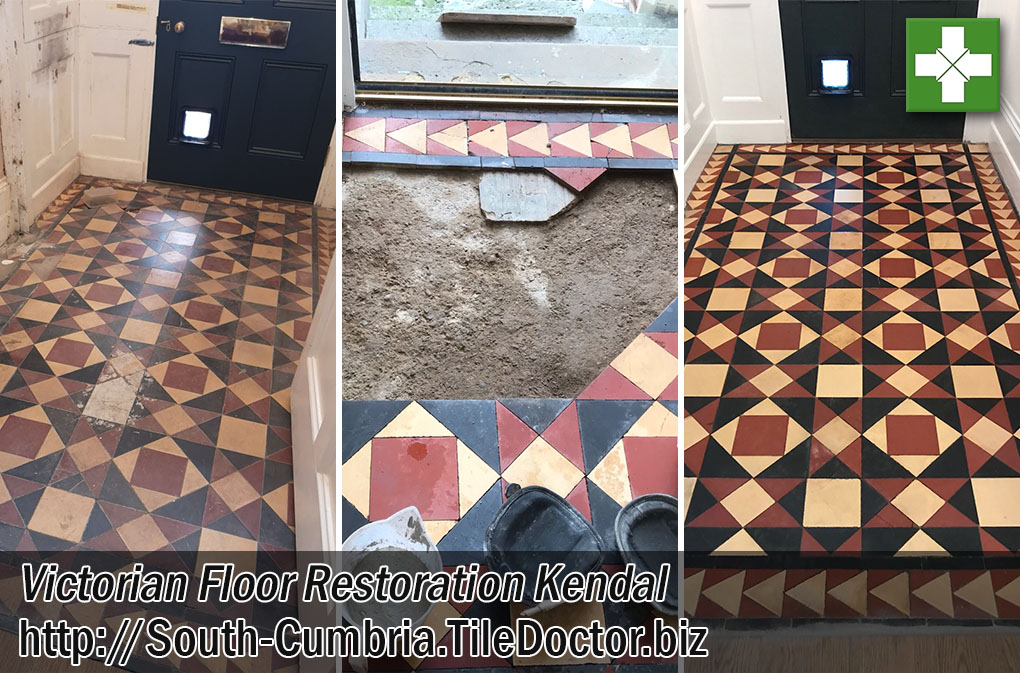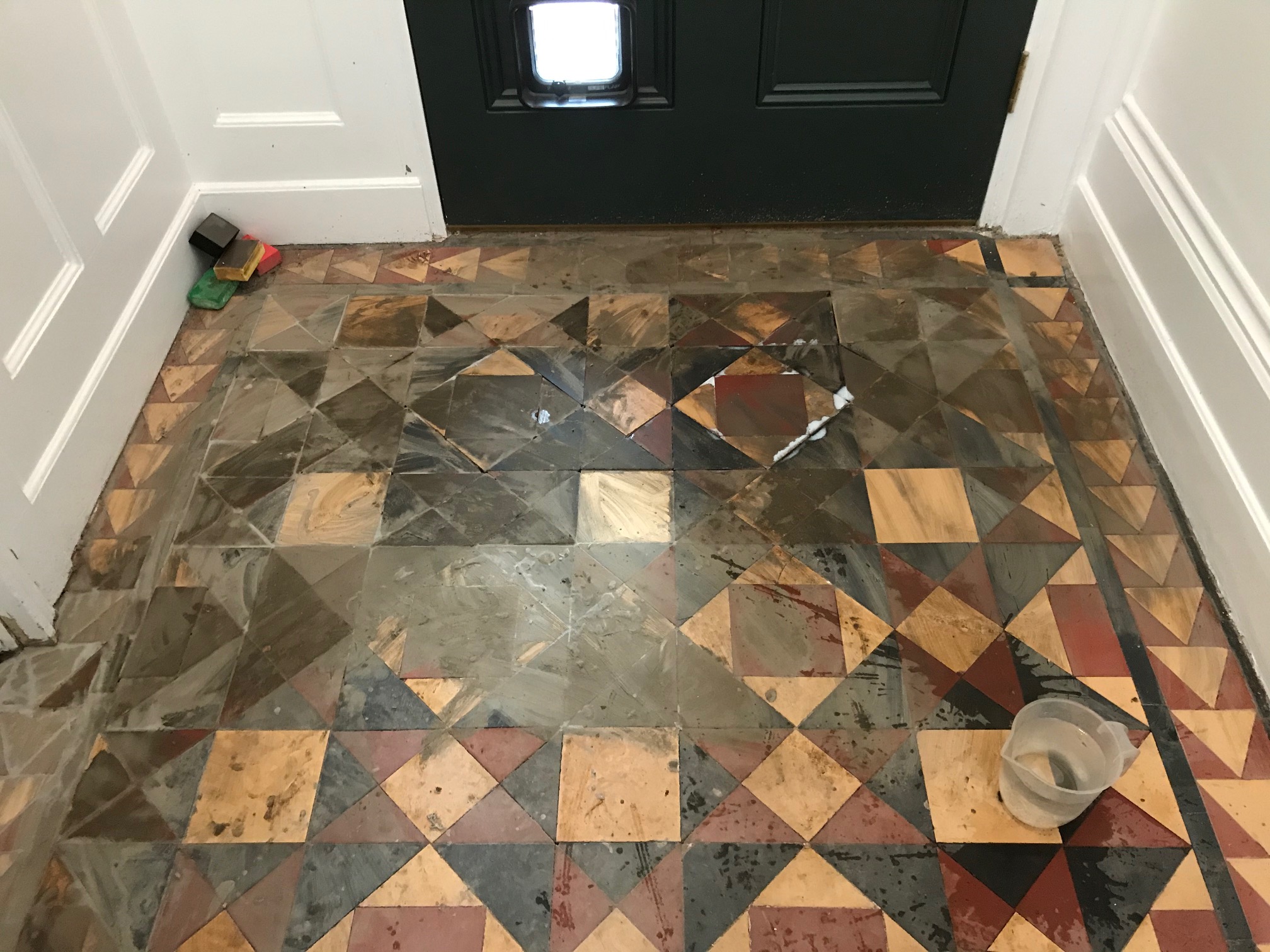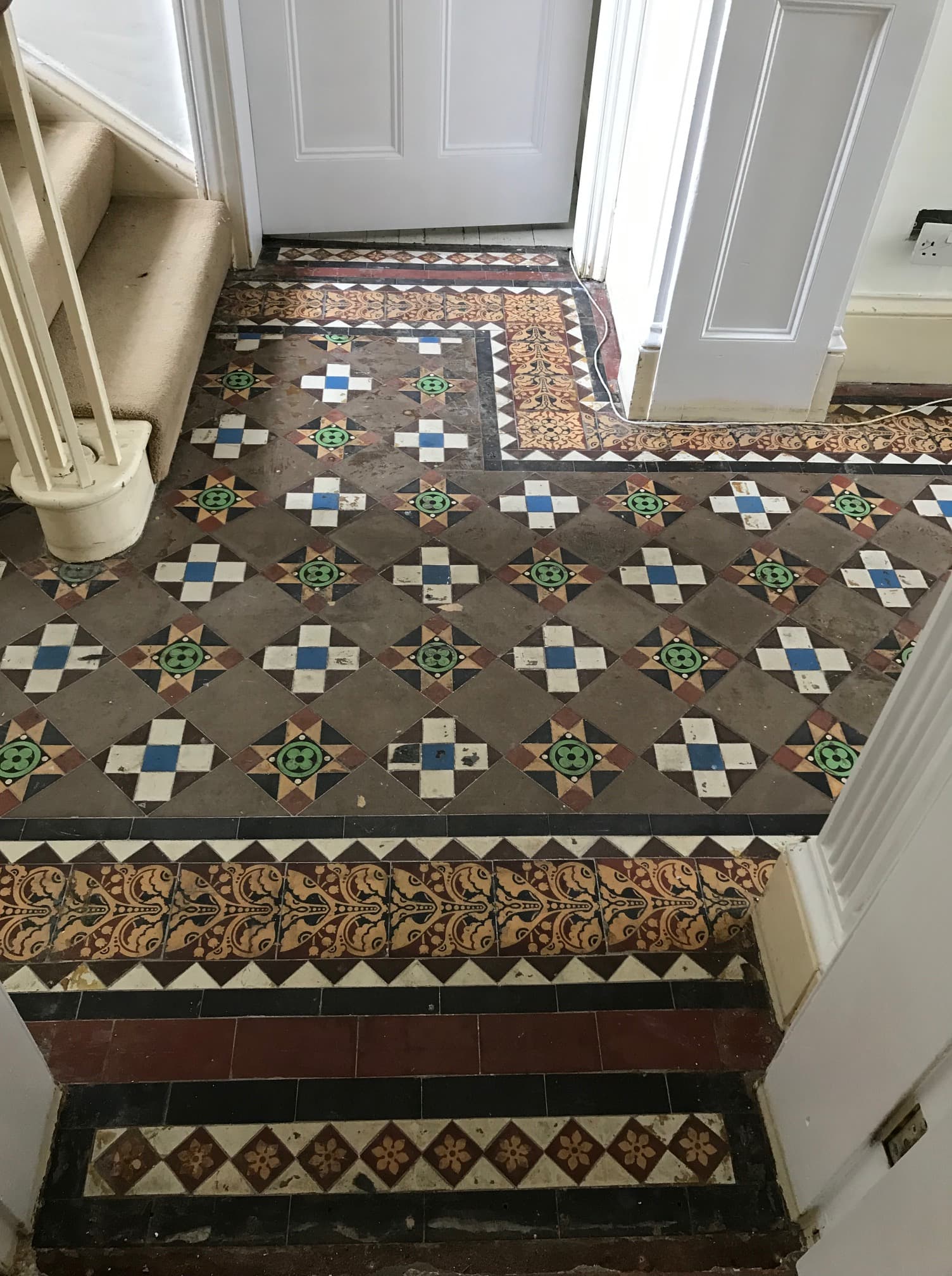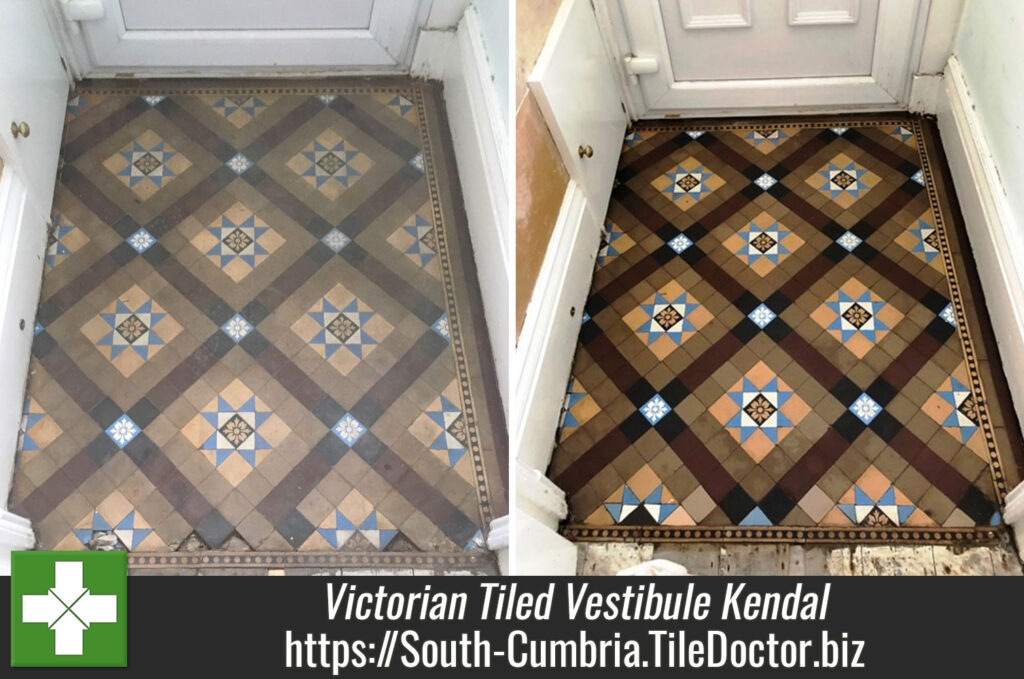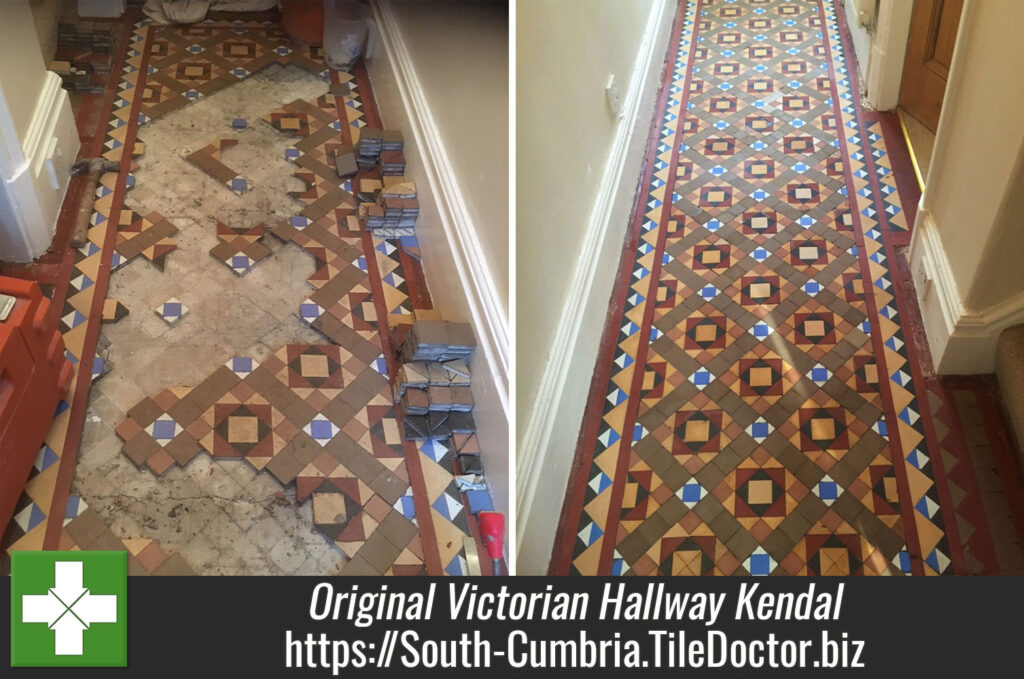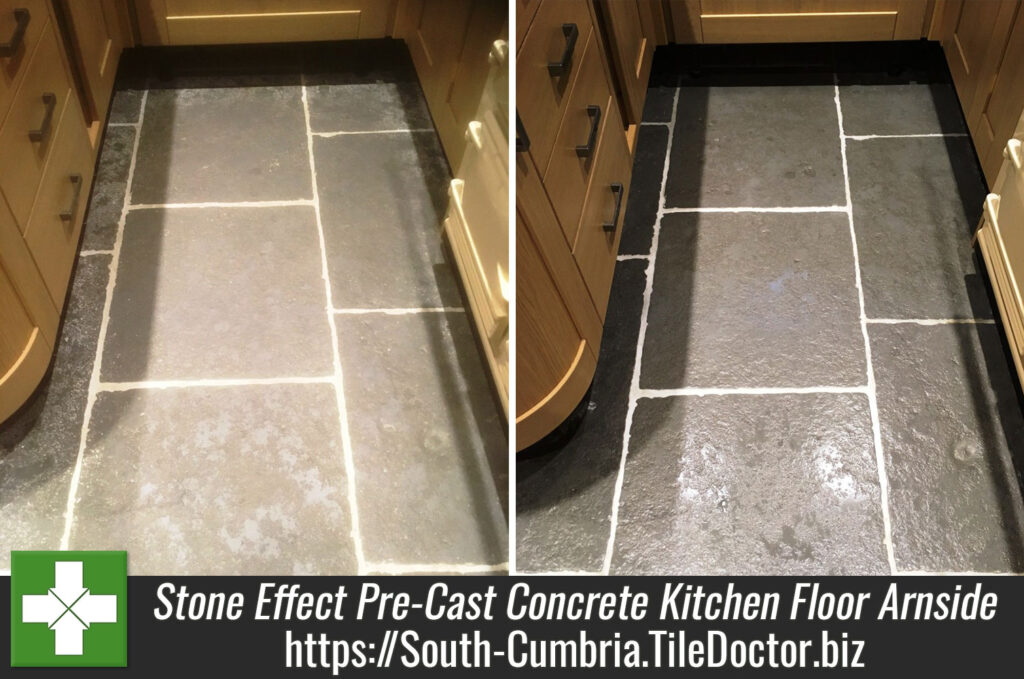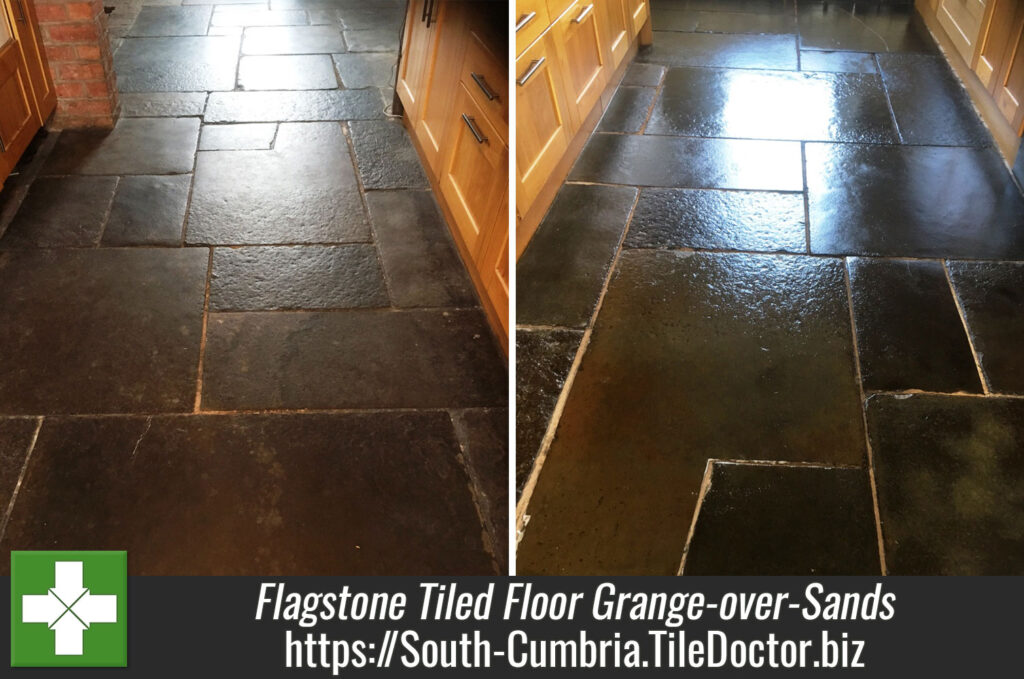Renovating an Original Encaustic Tiled Victorian Hallway Floor in Kirkby Stephen
A client from Kirkby Stephen had uncovered a heavily soiled and stained Victorian tiled floor in their hallway. The tiles were clearly quote old and included some lovely, patterned tiles as part of the design which were clearly handmade encaustic tiles that must have been over 150 years old.

Keen to have the original floor restored to its full potential I was asked to call in and quote for completing a sympathetic restoration of the whole floor including cleaning and then sealing. Having inspected the floor and confident it could be restored to a very good condition I discussed the main issues and came up with a plan for the work which would be respectful of the floors age.
Happy with my plan and detailed quotation I was given the go ahead and we agreed a date for my return.
Deep Cleaning an Encaustic Tiled Victorian Hallway Floor
Before starting cleaning, protective tape was applied to the stair carpet, new oak doors, skirtings, and other surrounding surfaces. This ensures all adjacent areas are safeguarded from moisture and chemical exposure.
The property had a cellar below and I was concerned that any excess liquids used during cleaning could seep through the floor, as a result I decided to clean the floor using low moisture gel cleaning products. This involved spreading Tile Doctor Oxy-Gel across the entire floor and then allowed the product to soak in for ten to fifteen minutes. The gel was then worked into the tiles using a deck brush initially and then a rotary scrubber fitted with a black pad.
The soiling was then extracted with a wet vacuum and then repeated until I was satisfied the tiles were as clean as they could be. In-fact the floor was so dirty this process had to be repeated five to six times to lift deep-set grime and reveal the original colours of the tiles. Once done the floor was given a quick rinse with water which was then extracted using the wet vacuum.
Last step was to give the tiles an acid rinse using Tile Doctor Acid Gel which is another gel cleaner which can remove cement-based residues, mineral deposits, and other contaminants. The gel was allowed to soak in briefly before being removed using the wet vacuum.
The last step in the process was to give the floor another quick rinse to remove any trace of cleaning products and then dried thoroughly with the wet vacuum and left to dry off fully with the aid of several floor fans.
Sealing an Encaustic Tiled Victorian Hallway Floor
The next day I returned to inspect the floor and make sure it was dry using a moisture meter to confirm it was dry enough to be sealed. Sealers don’t cure well on damp floors resulting in a patchy appearance so it’s always a good idea to check for dampness first.

To seal and protect the Victorian tile, a couple of coats of Tile Doctor Colour Grow were applied to the floor using a paint pad applicator. Colour Grow is a fully breathable, colour enhancing sealer which soaks into the tile, occupying the pores and thereby preventing dirt from residing there. This ensures dirt remains on the surface where it can be easily cleaned away.
You can see from the photographs that the transformation was dramatic, I just wished I took more photos. Certainly, my client was extremely pleased with the final result. For aftercare I recommended they use Tile Doctor Neutral Tile Cleaner which is a mild but effective floor cleaning product that’s designed for use on sealed floors.
 |
 |
Professional Renovation of a Victorian Tiled Hallway in Cumbria
Renovating an Original Encaustic Tiled Victorian Hallway Floor in Kirkby Stephen Read More »

